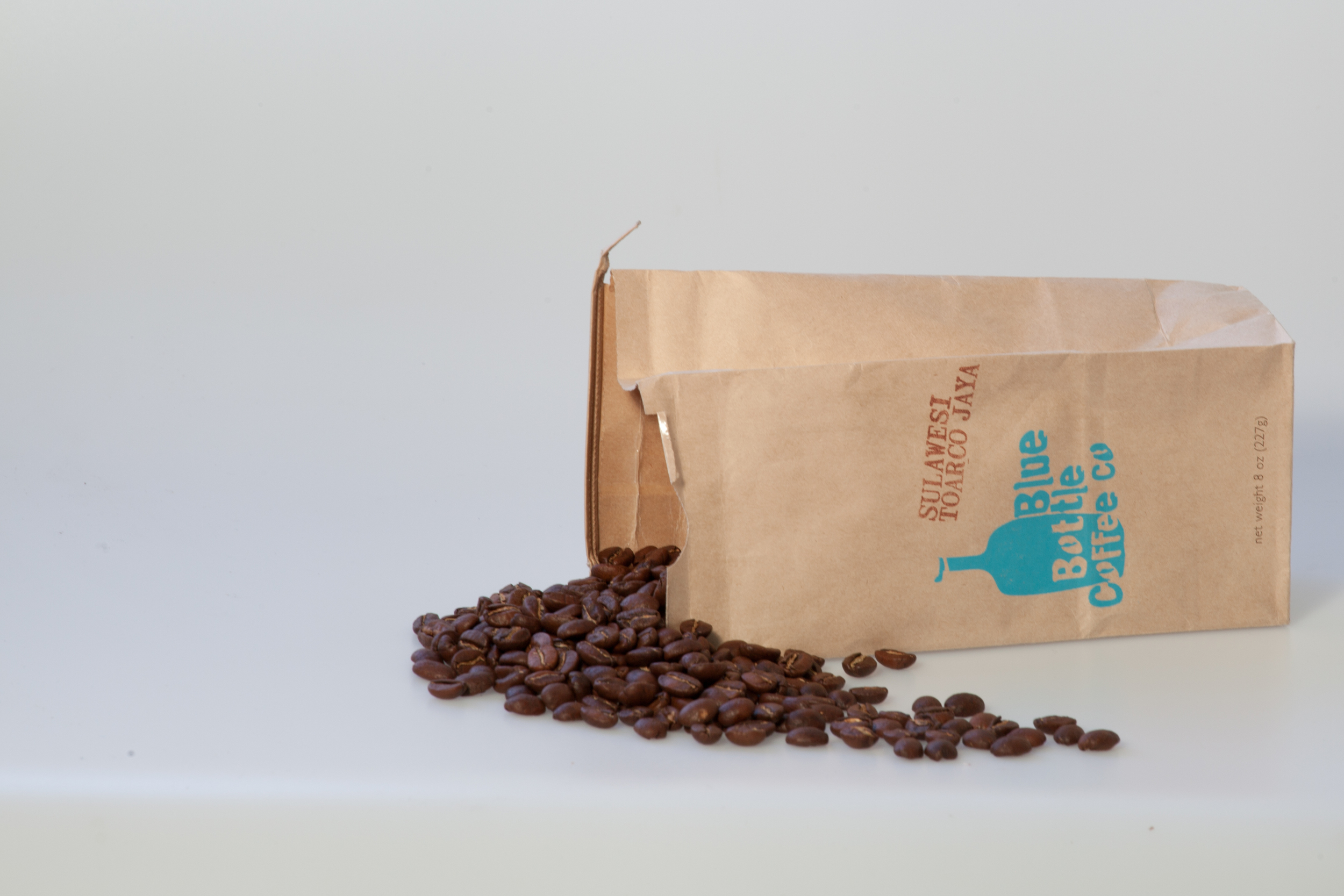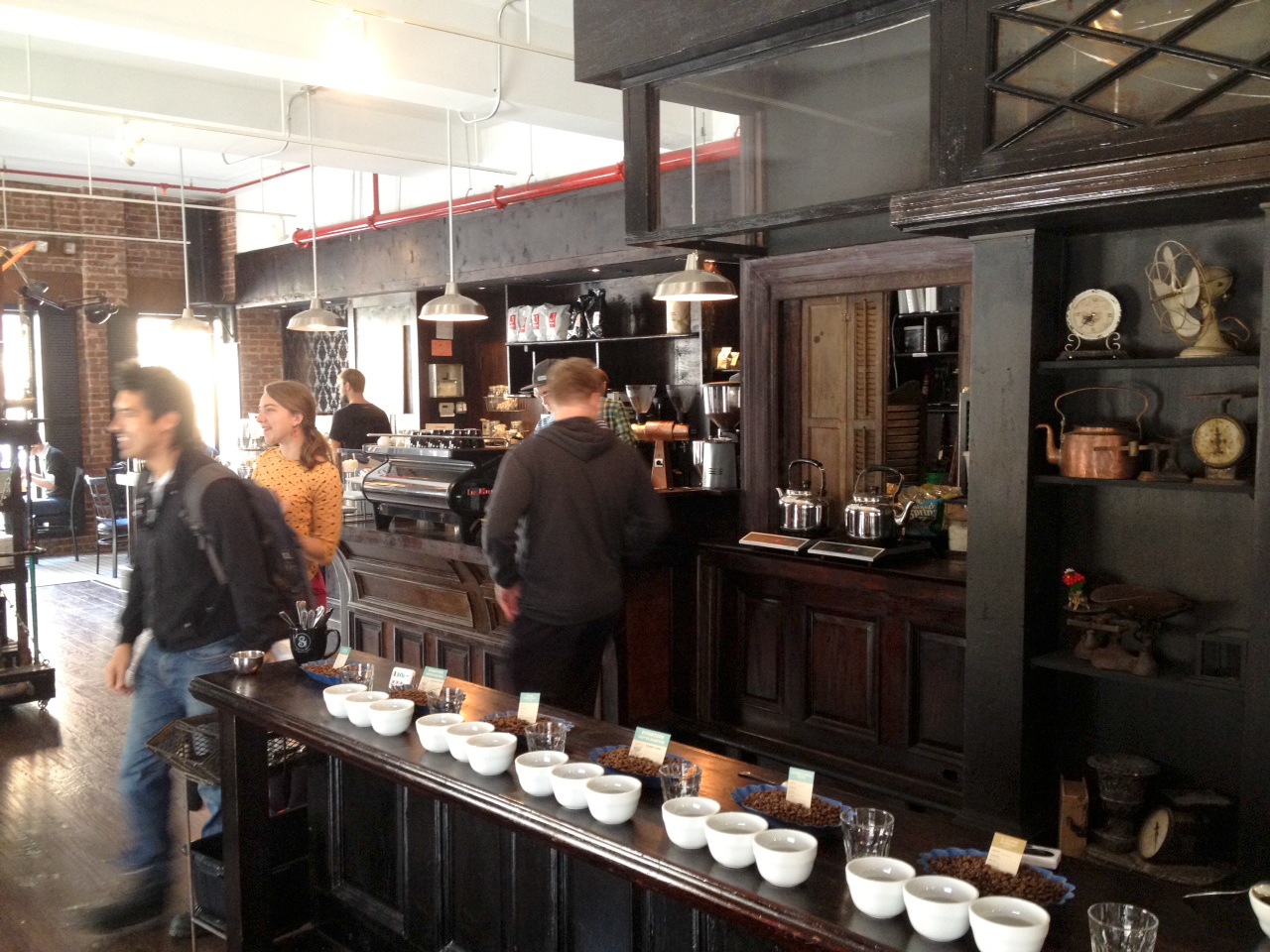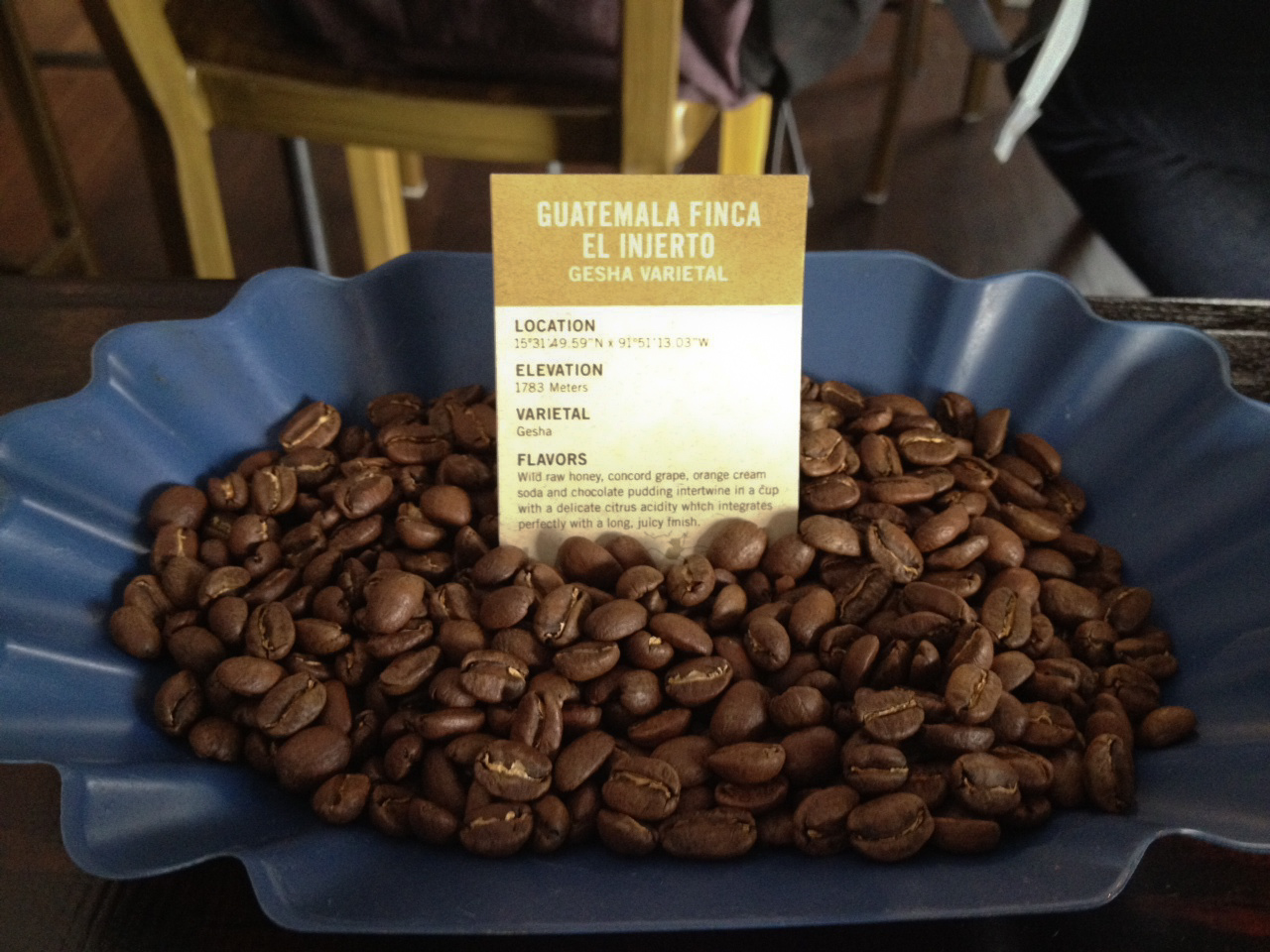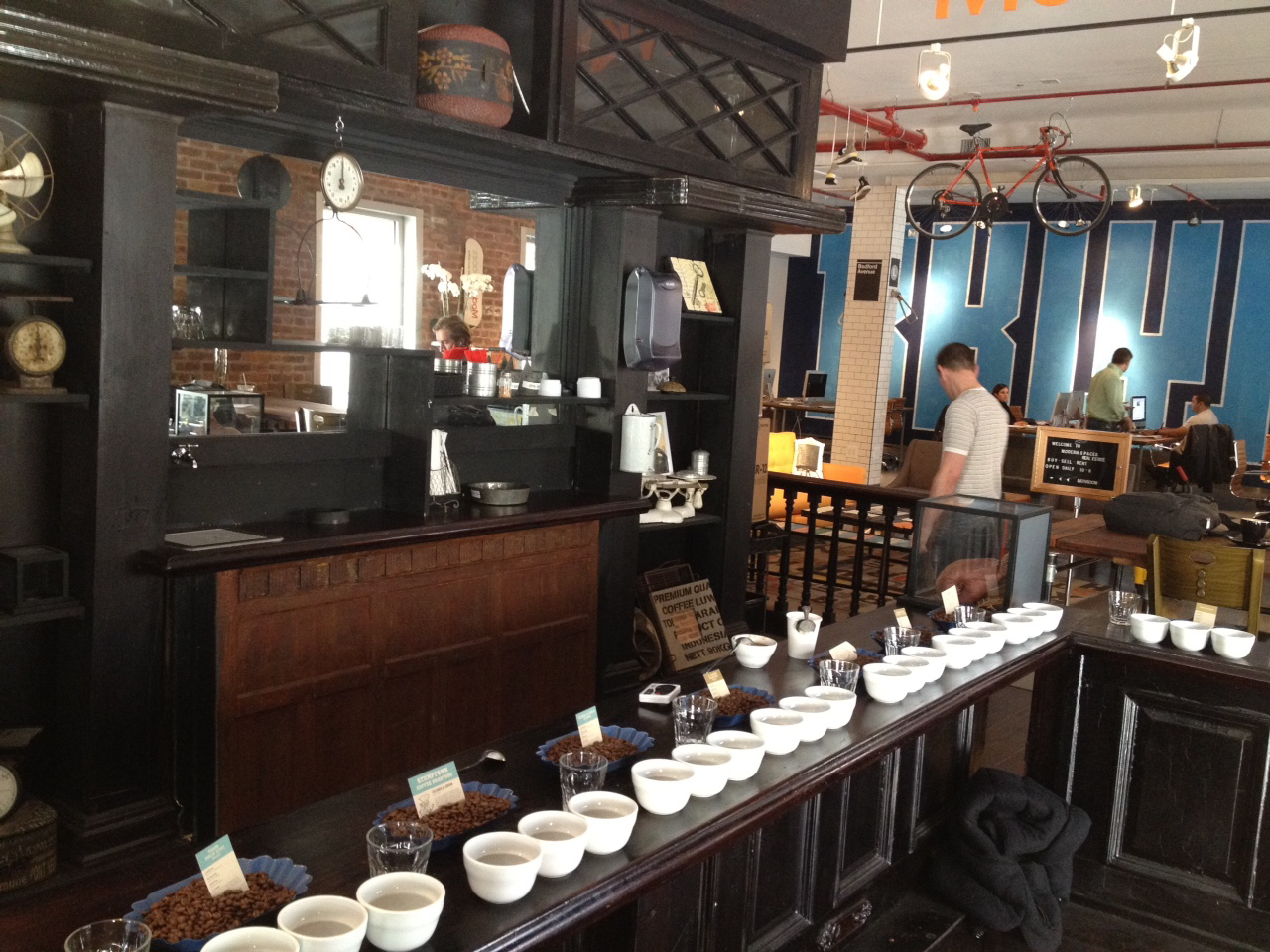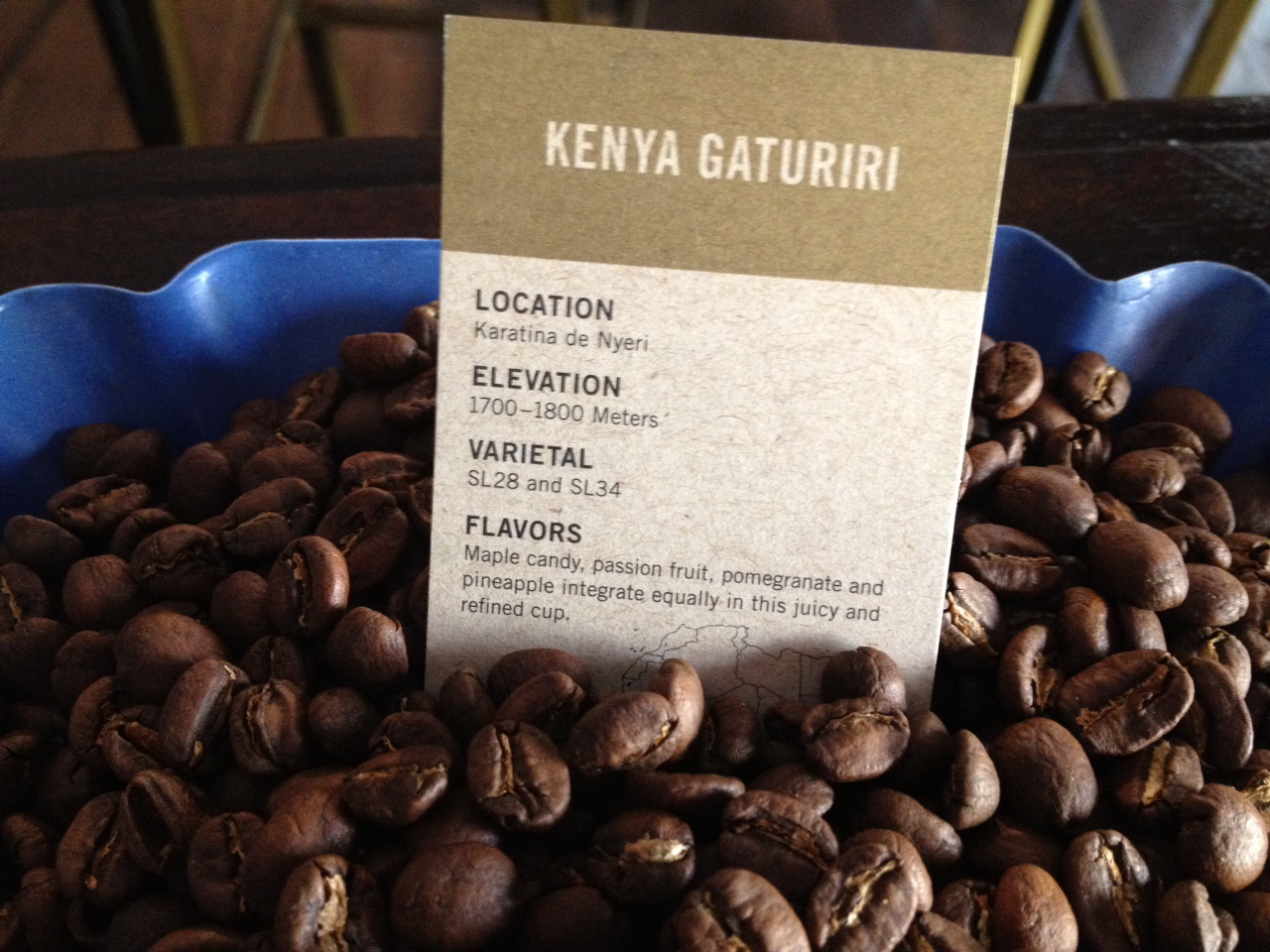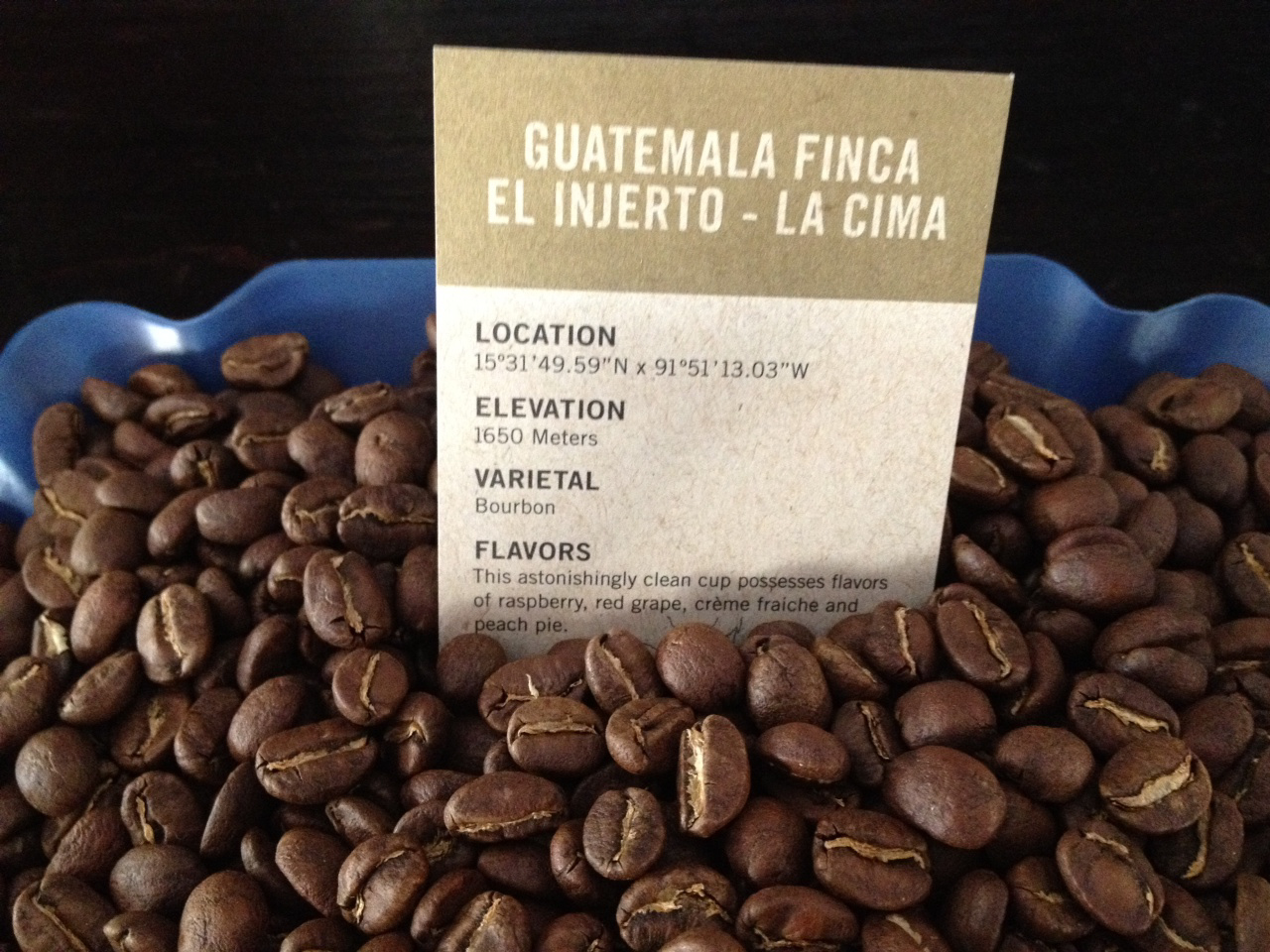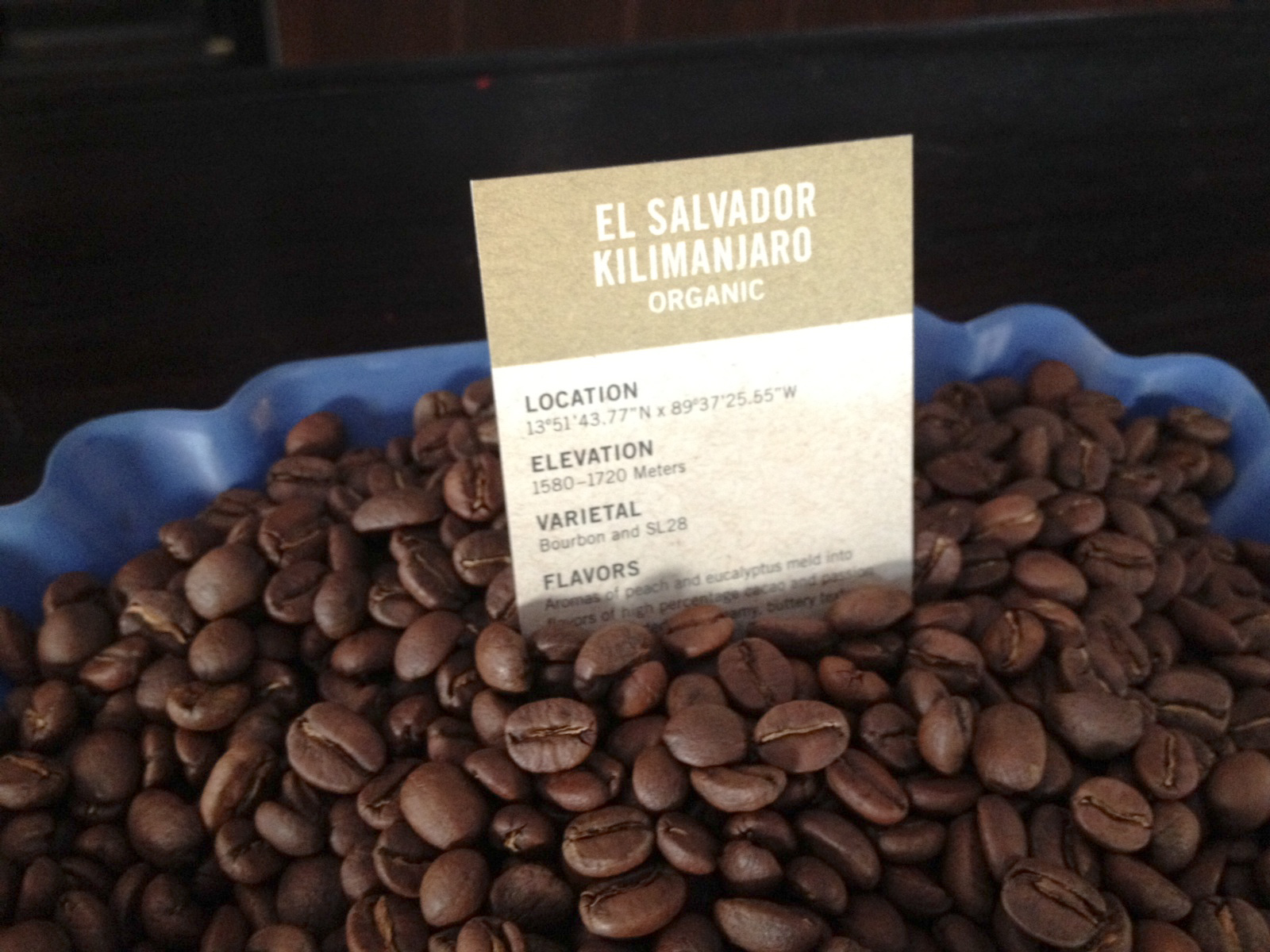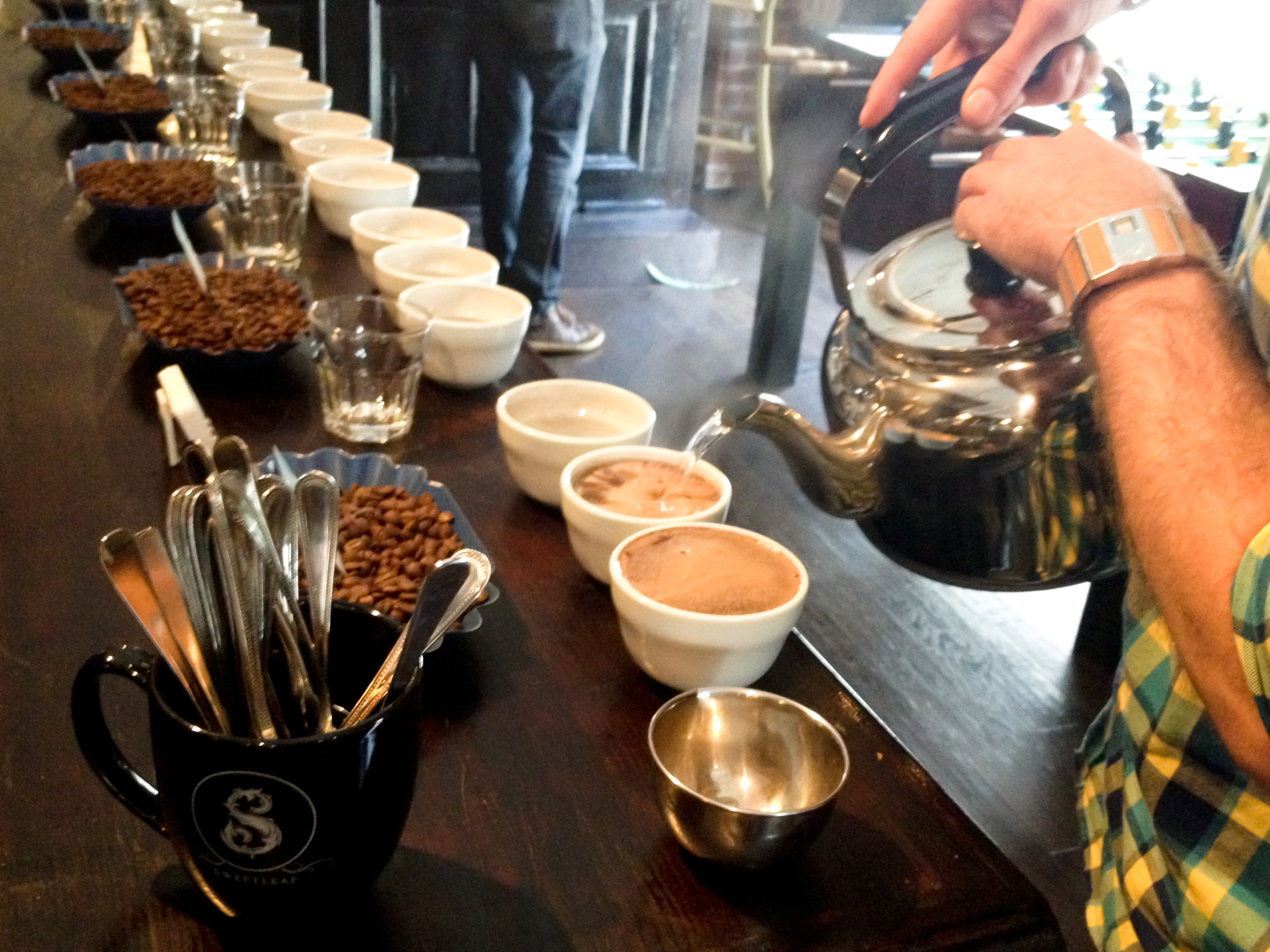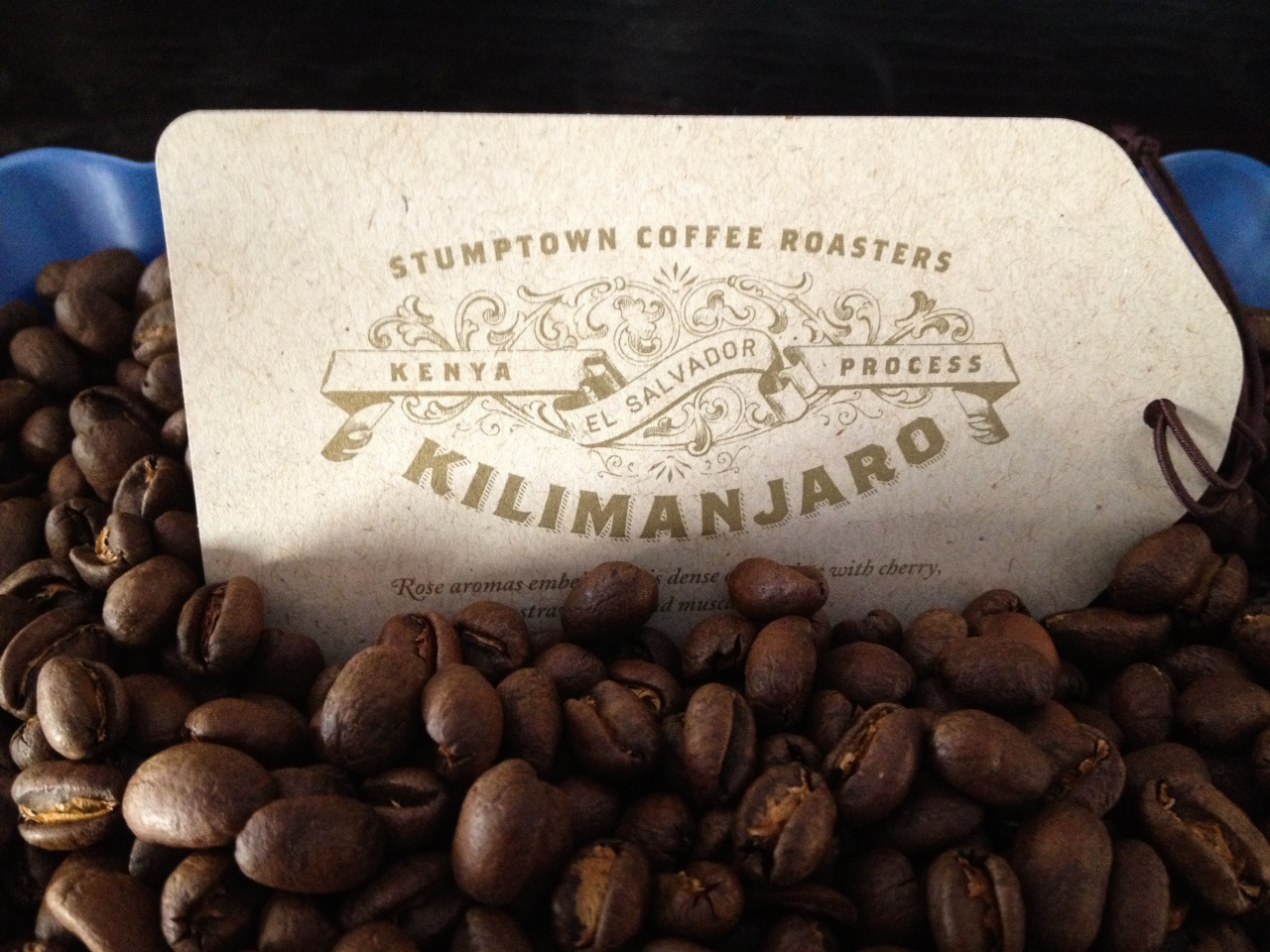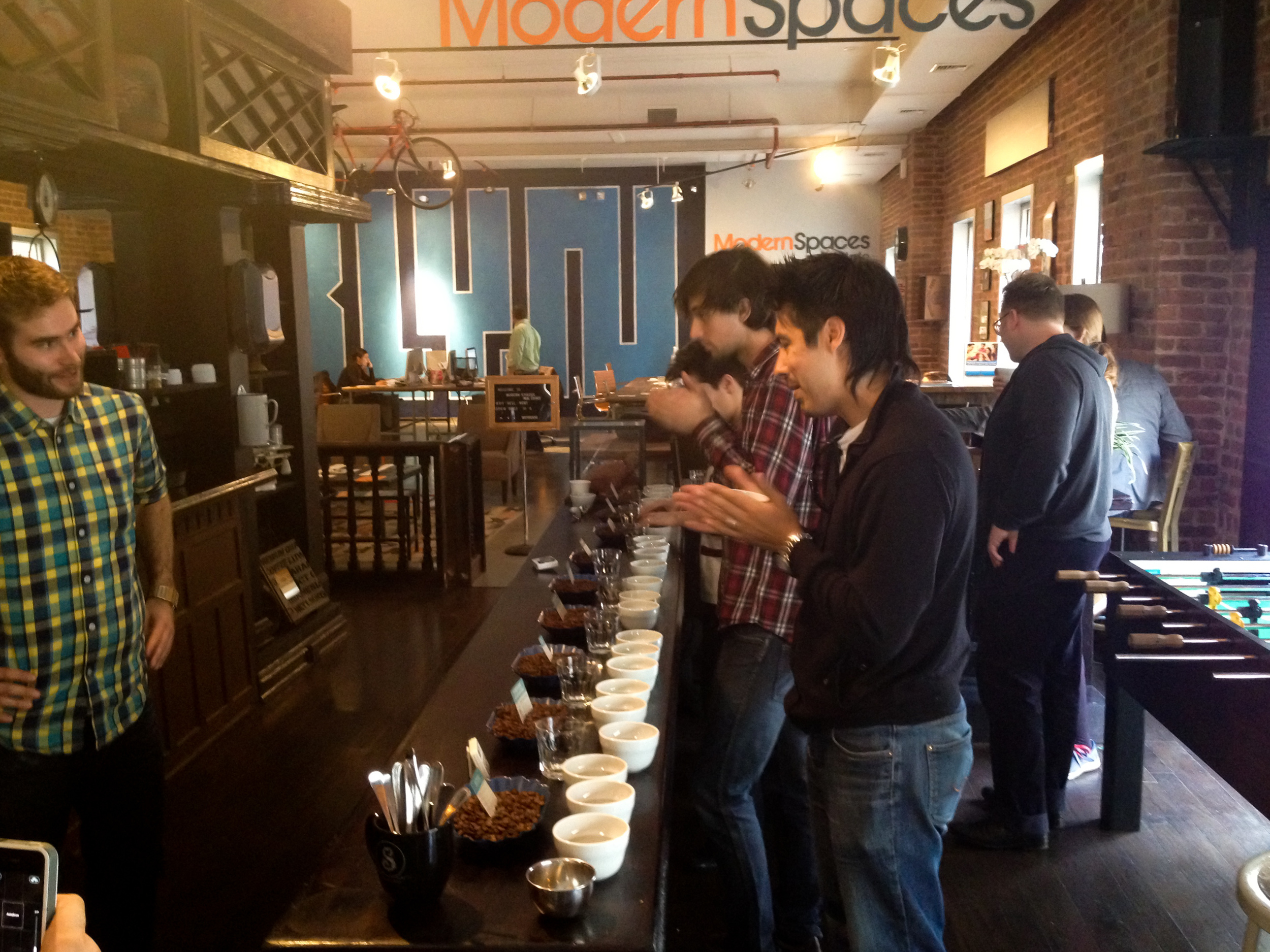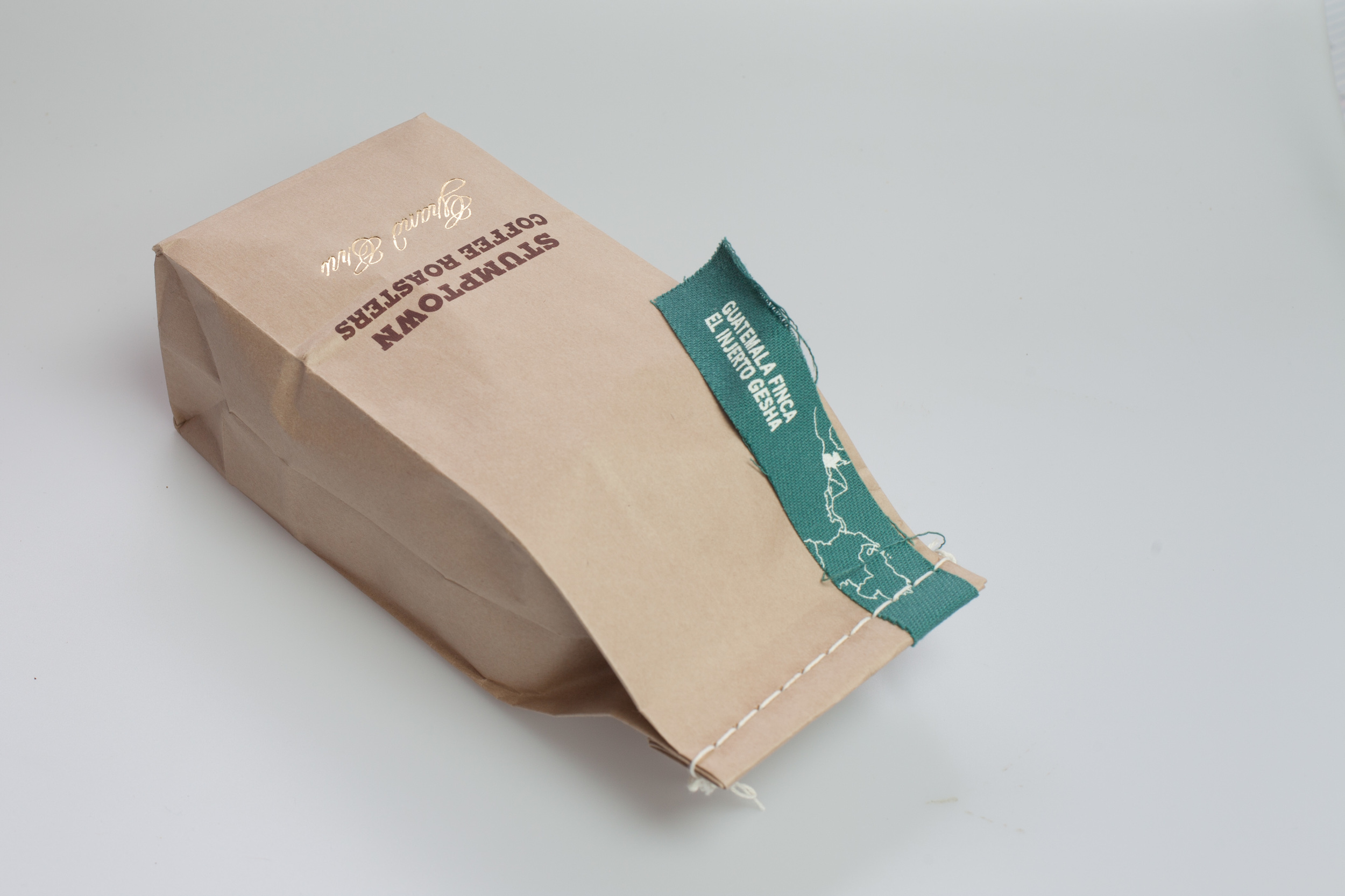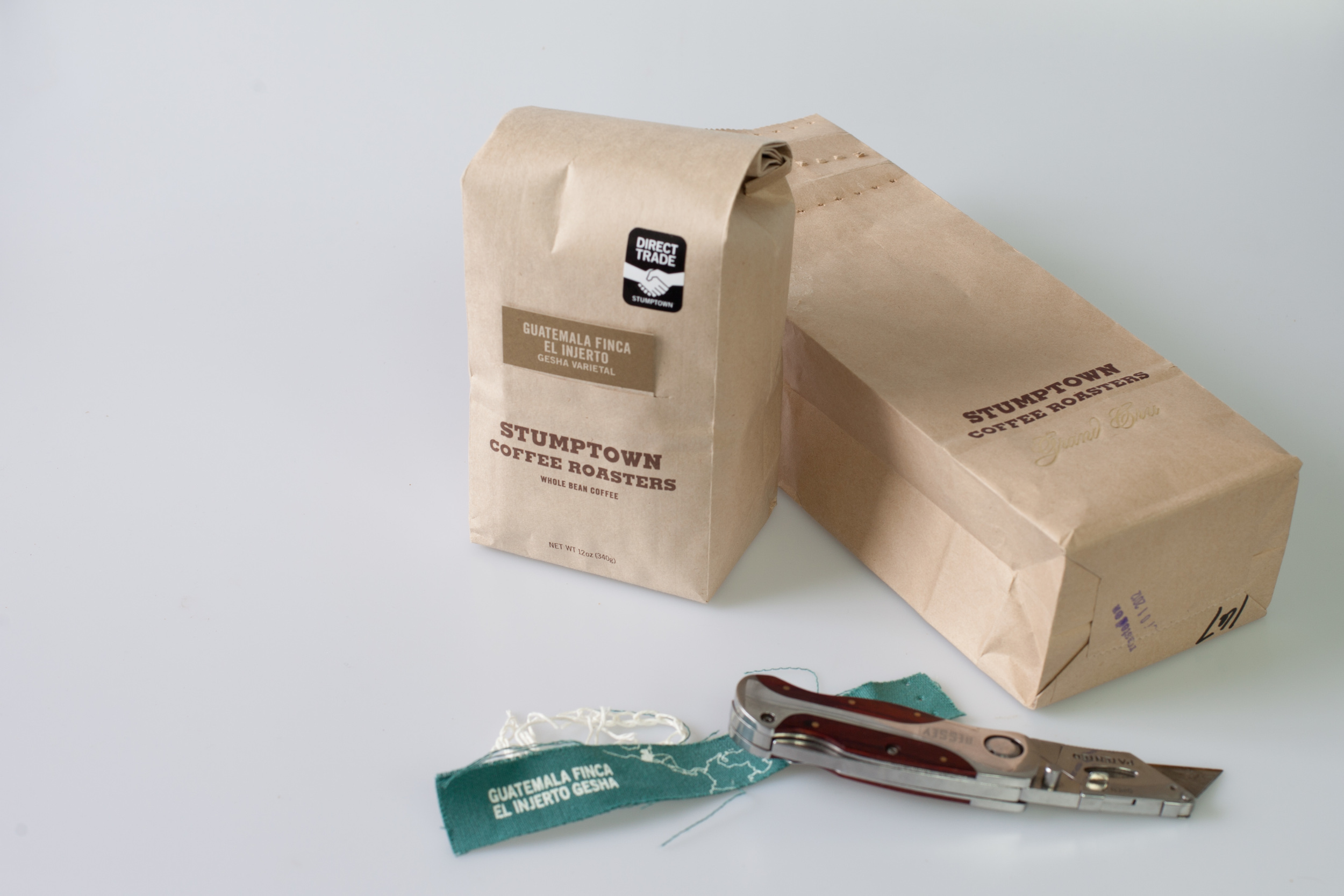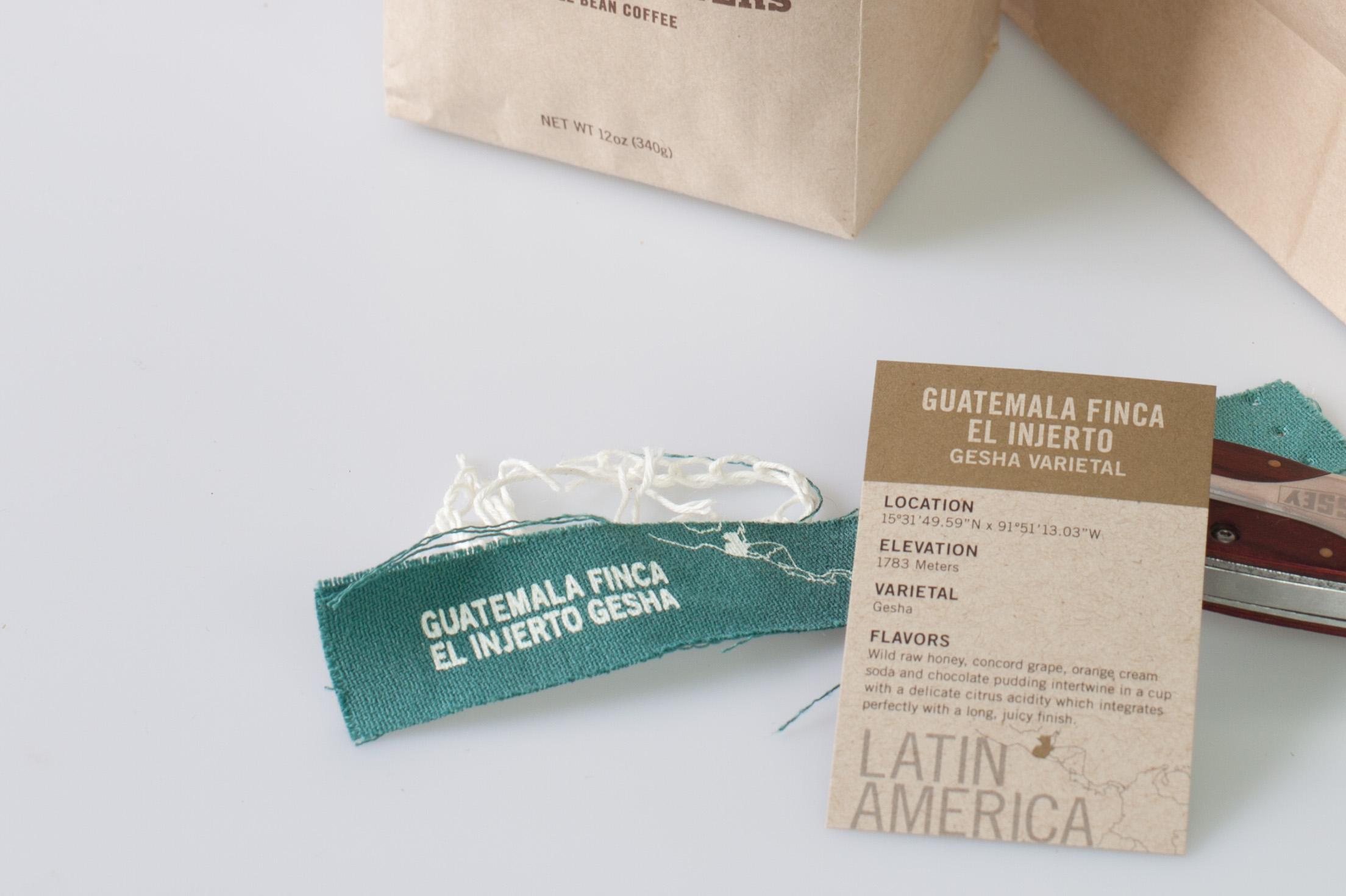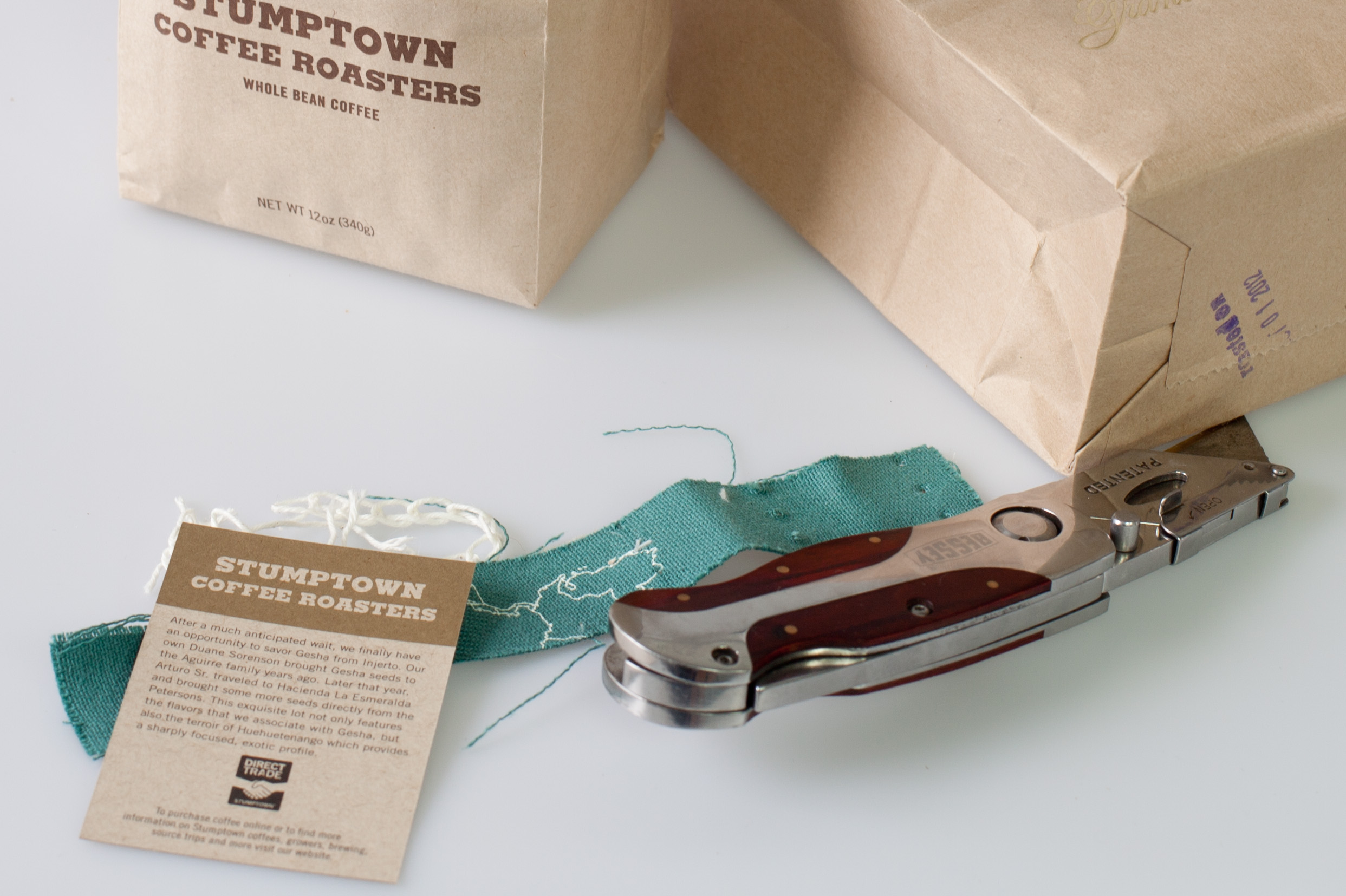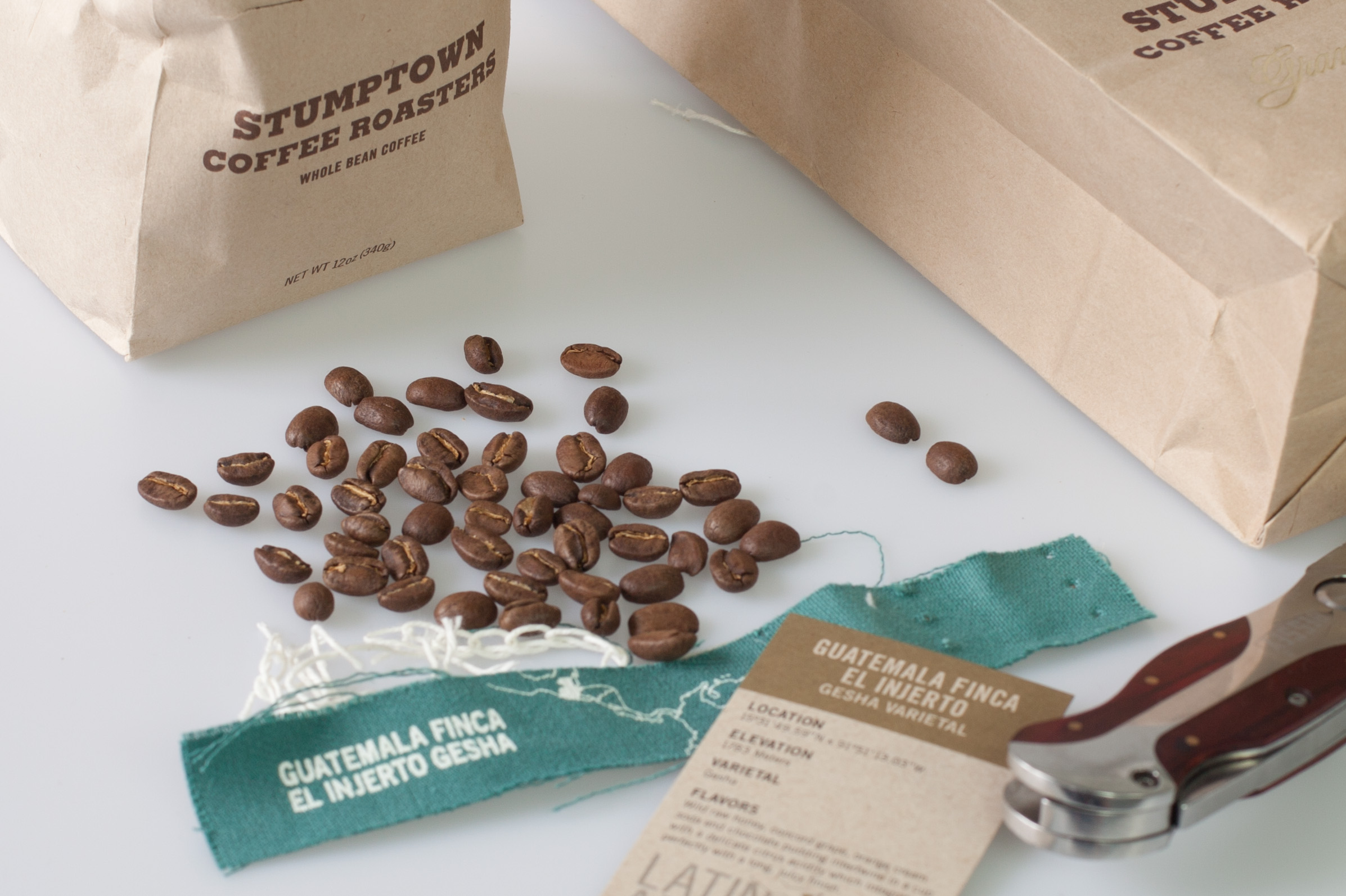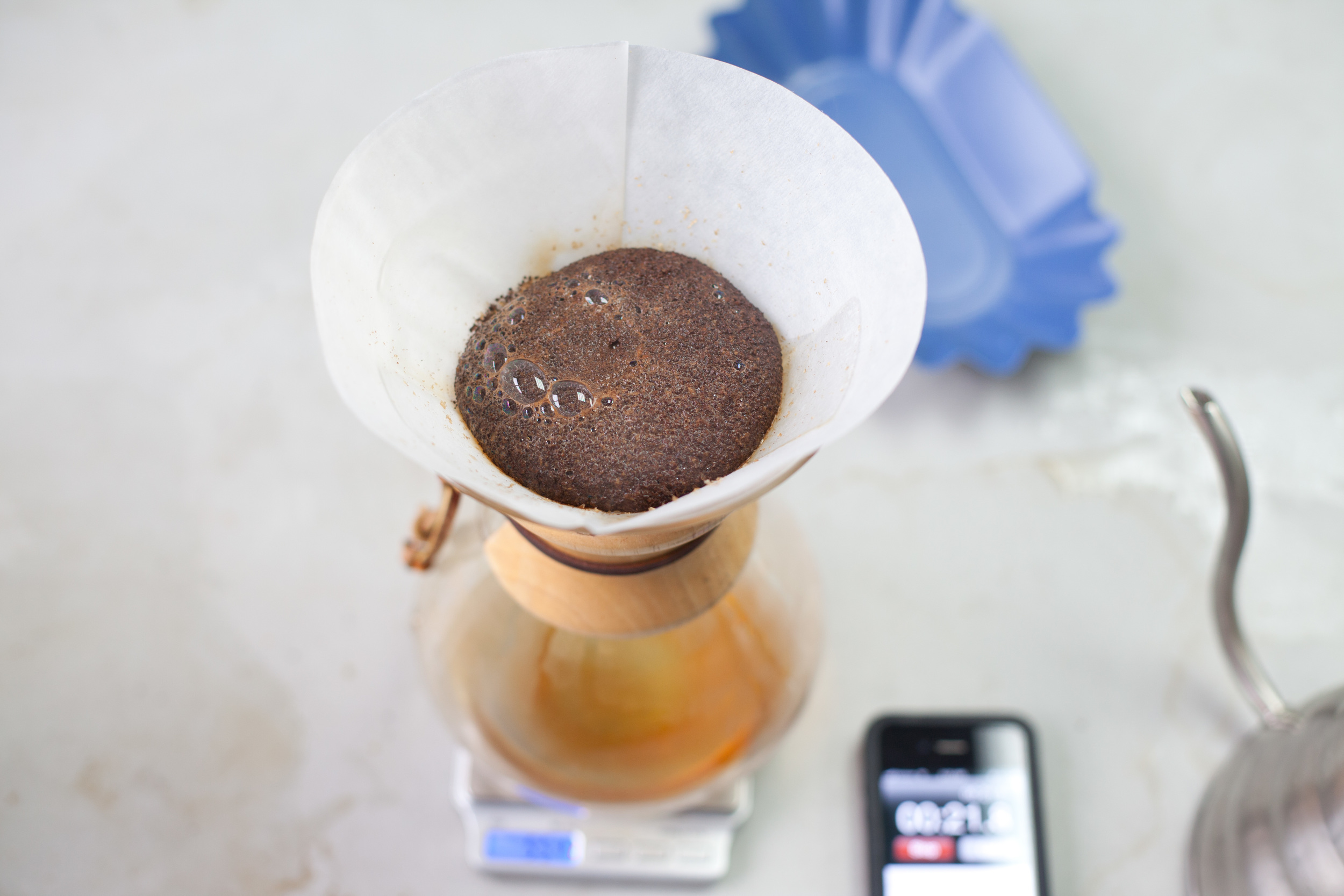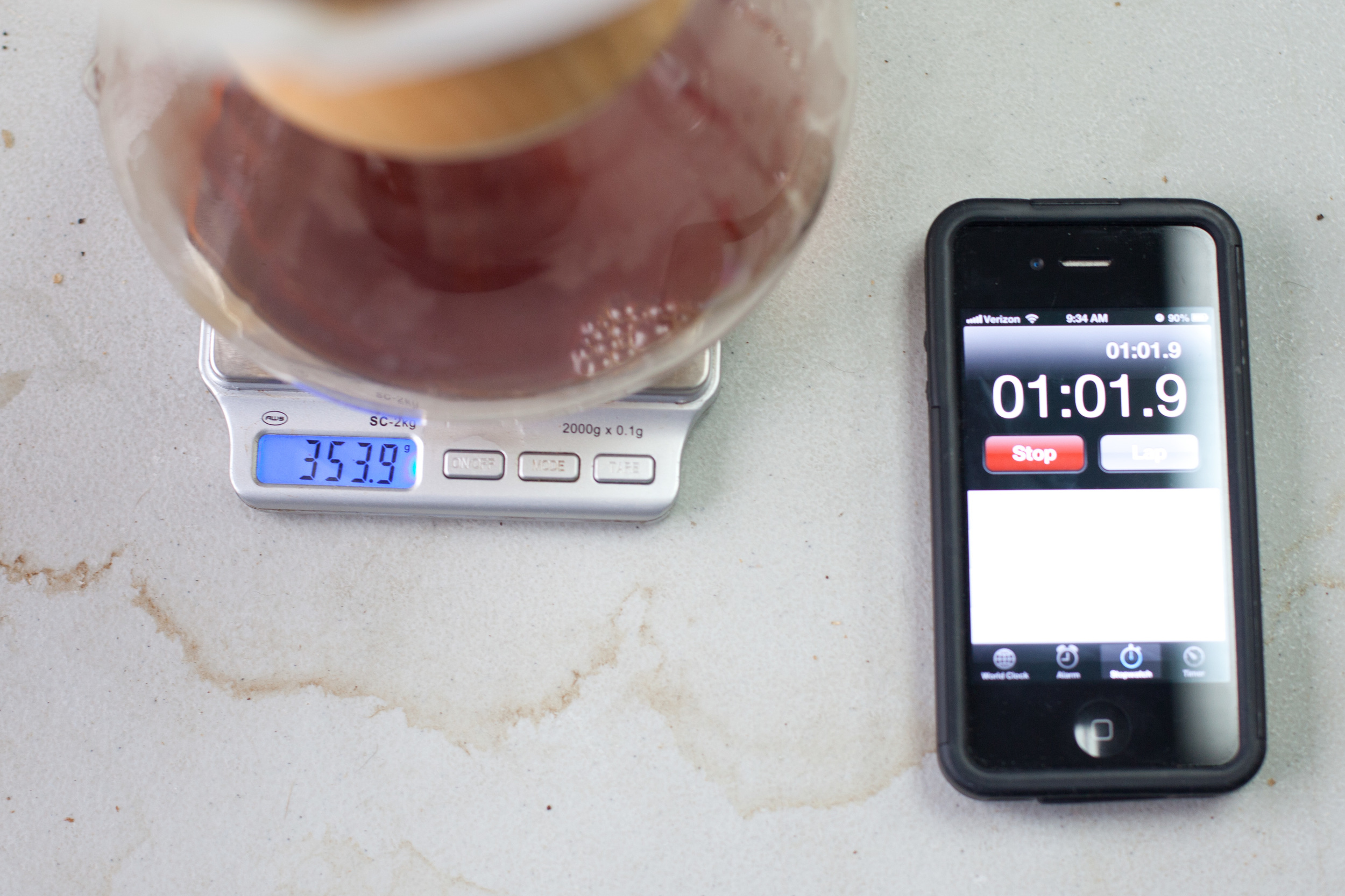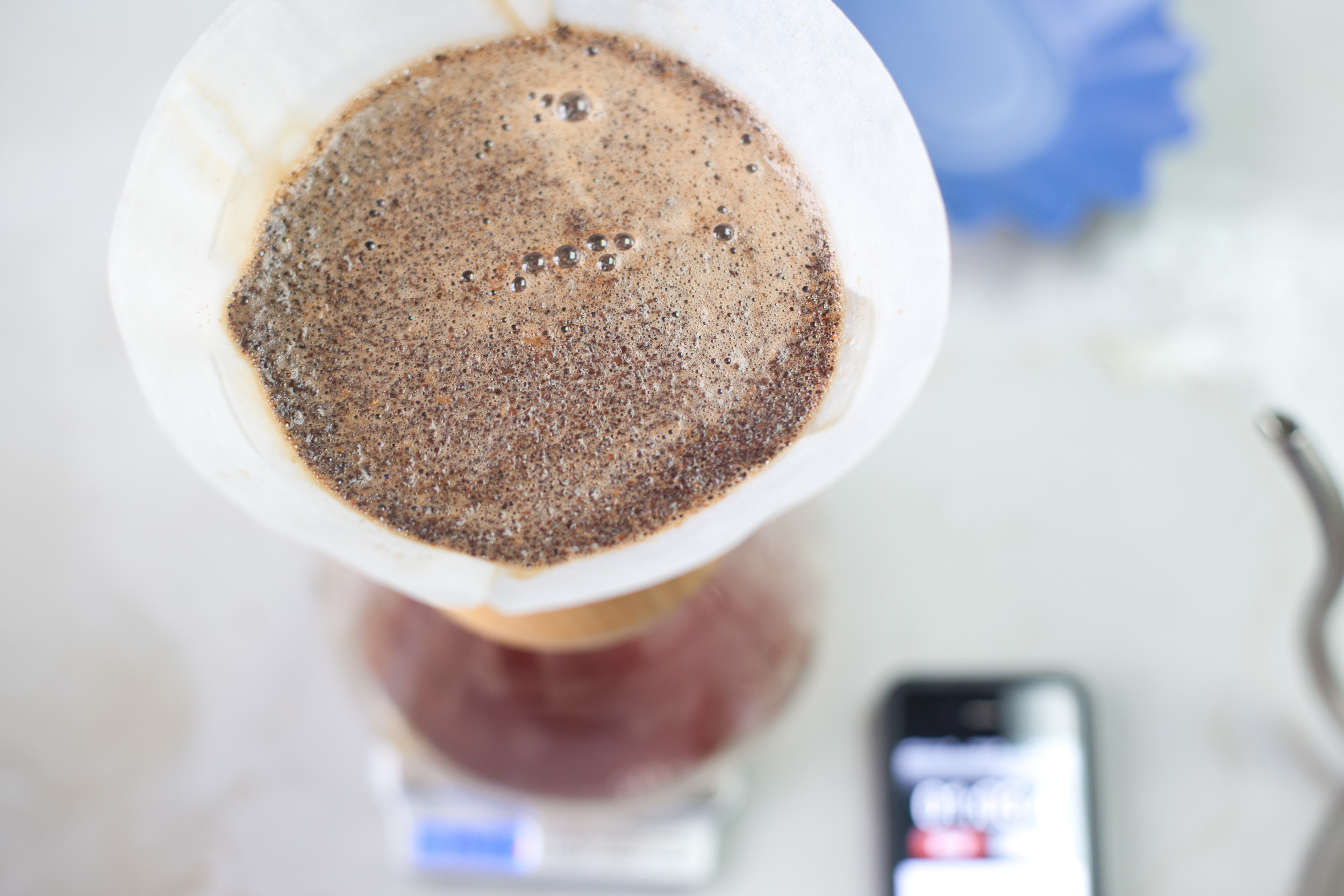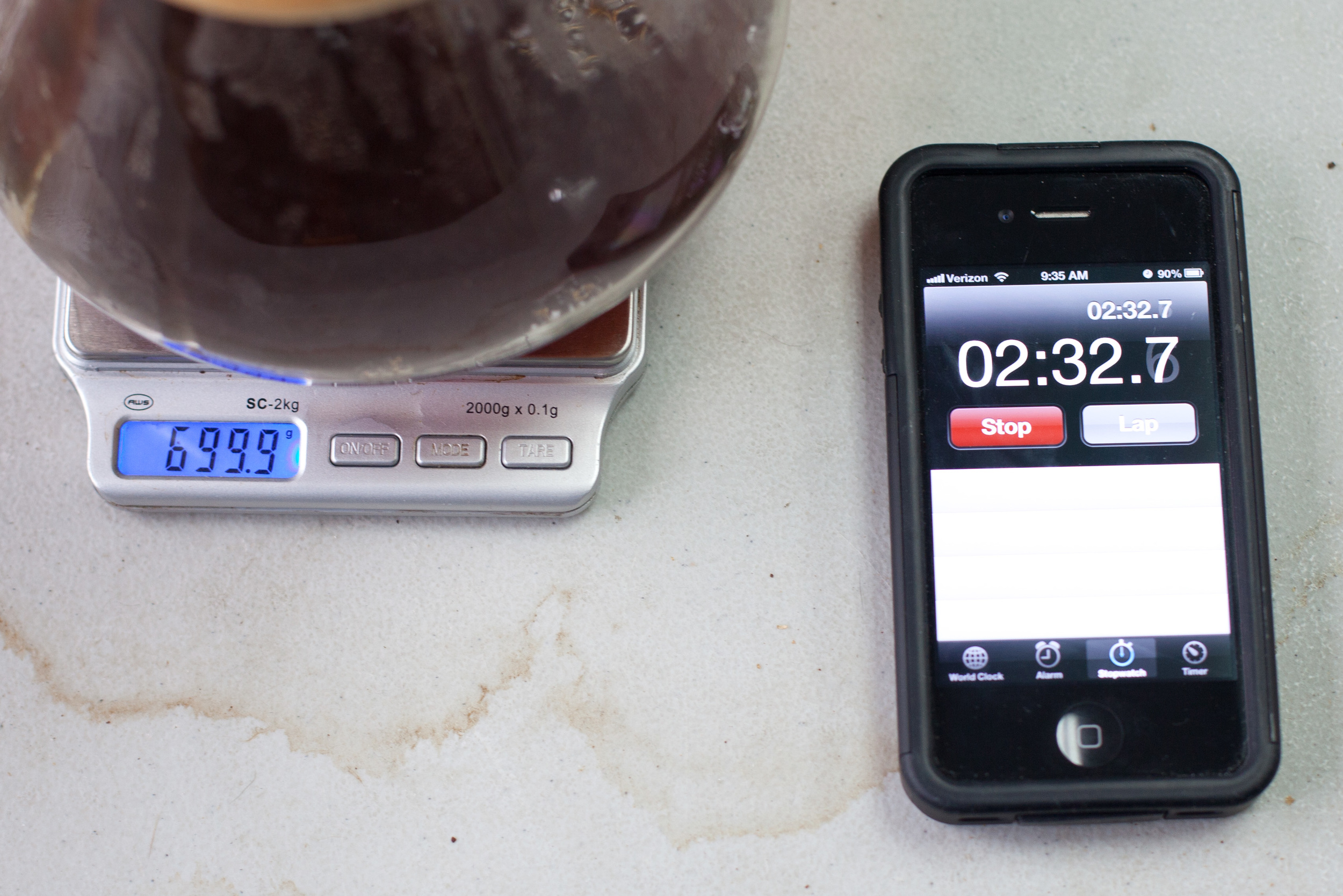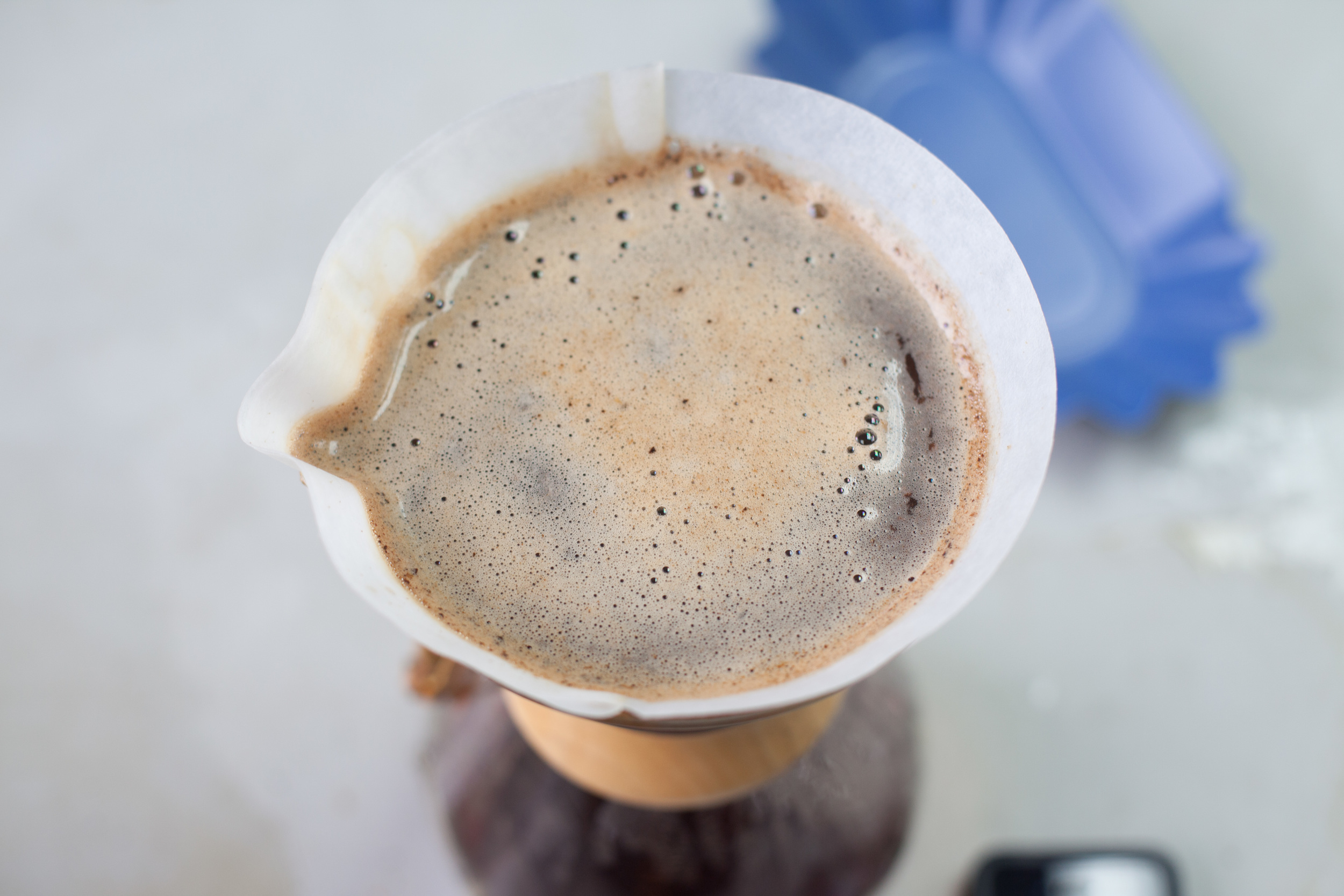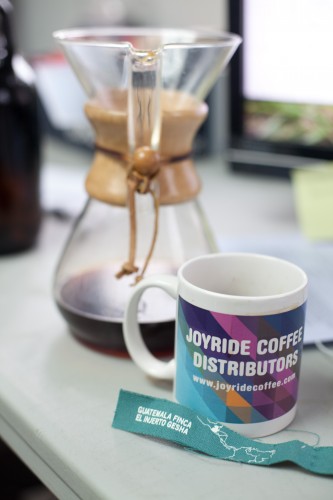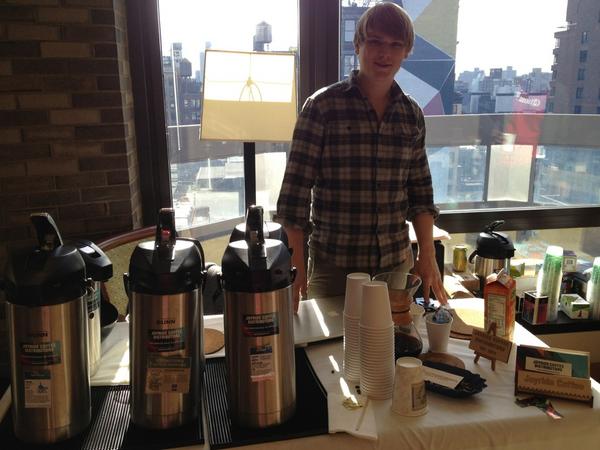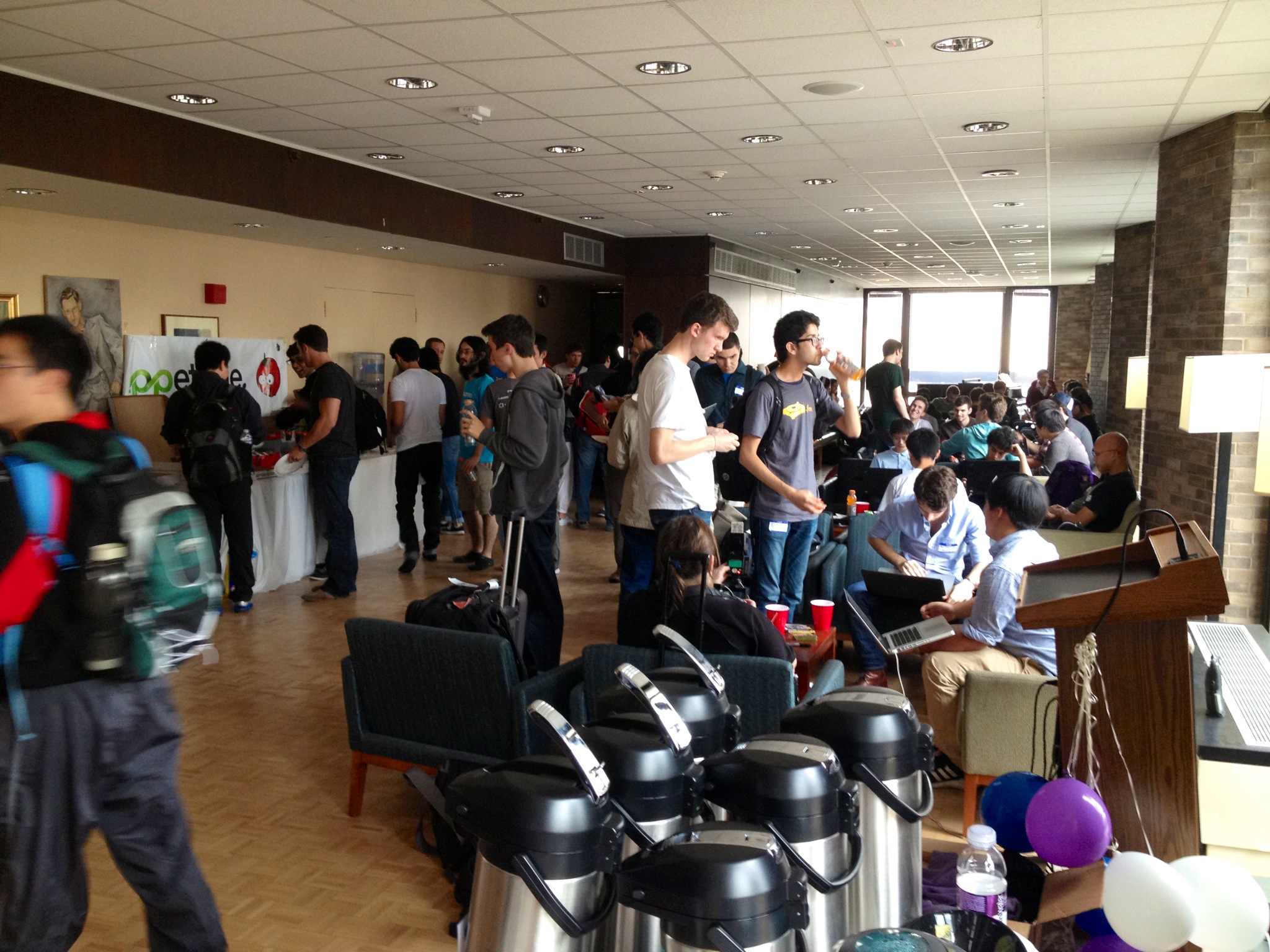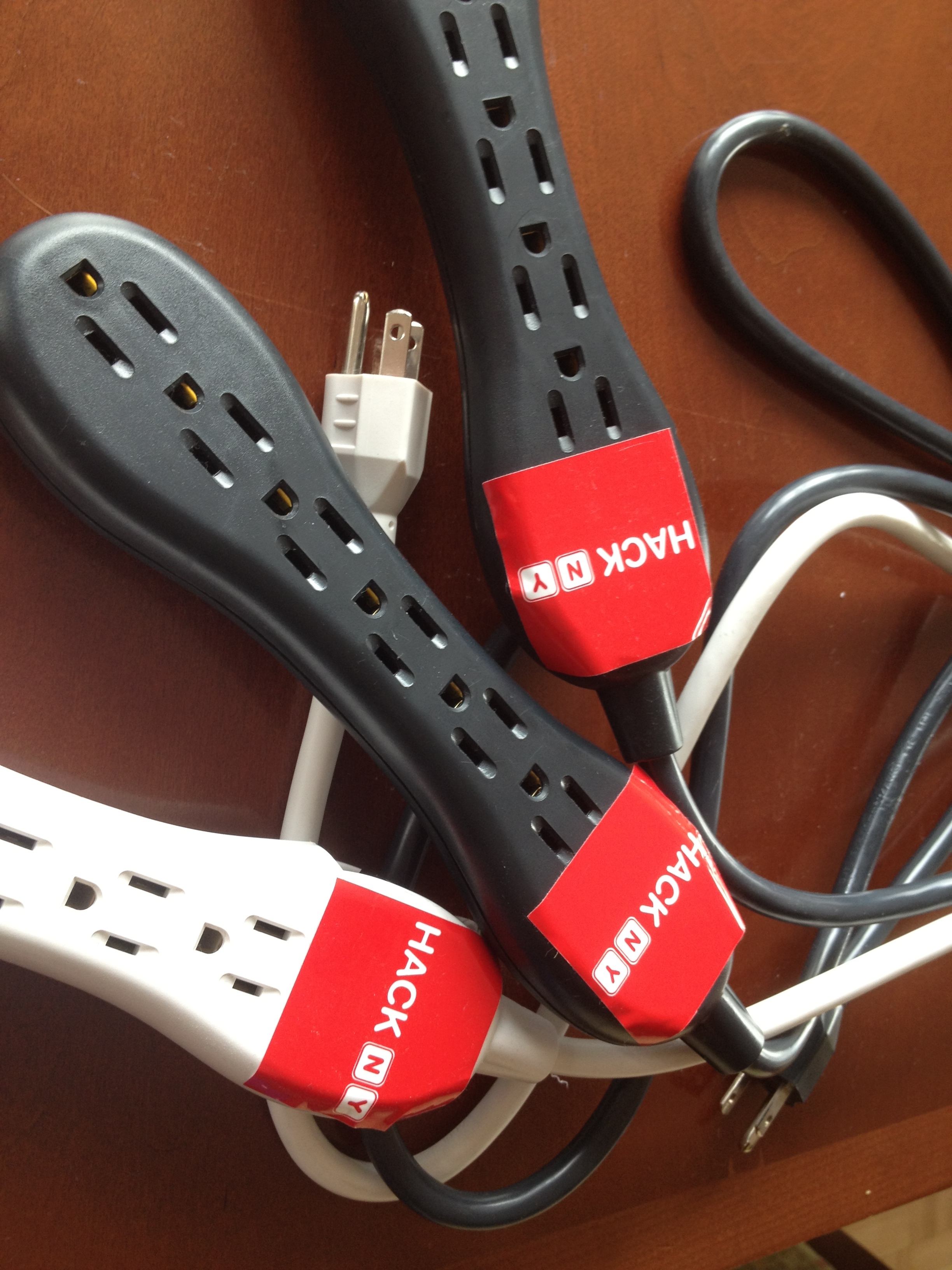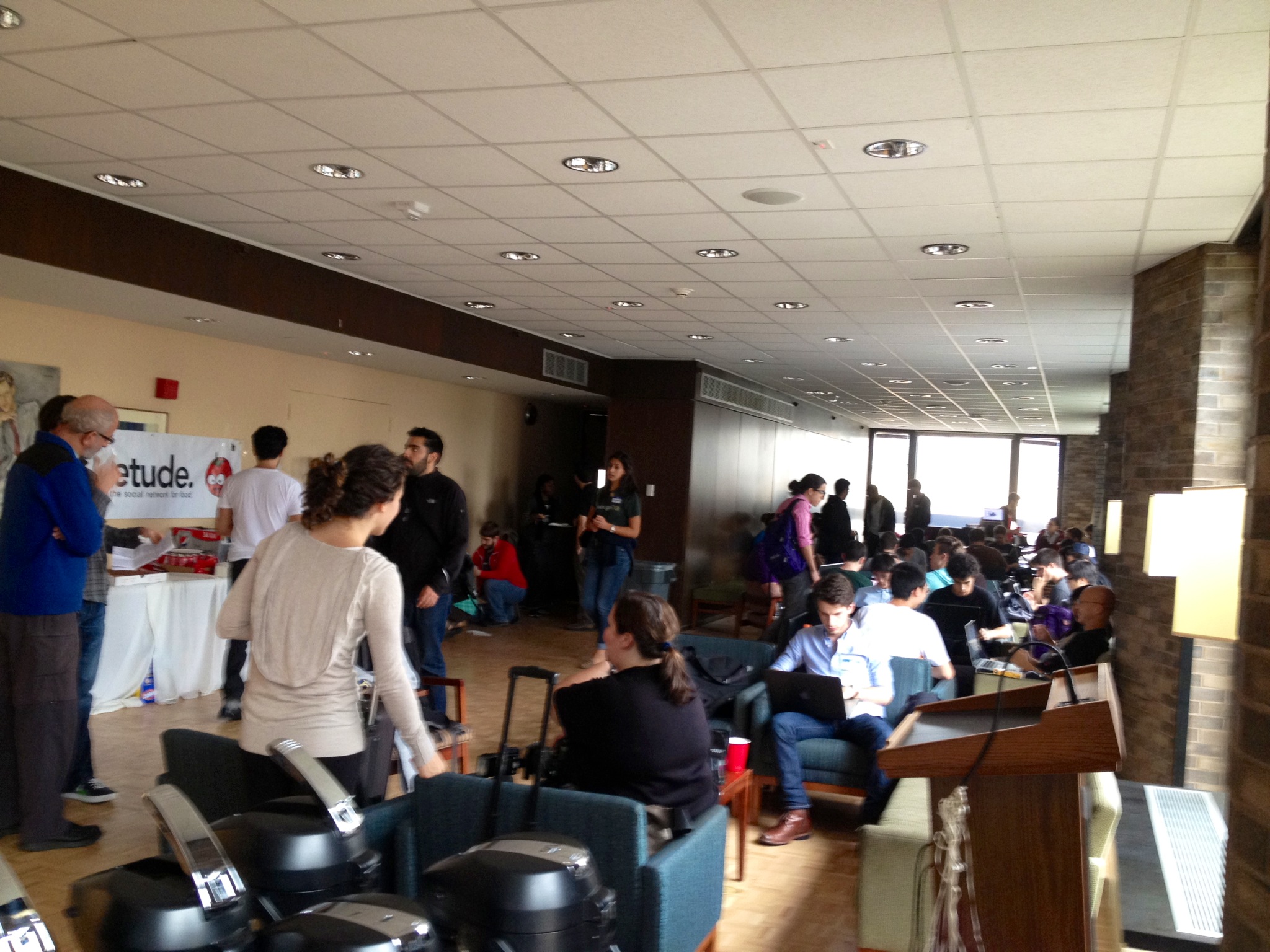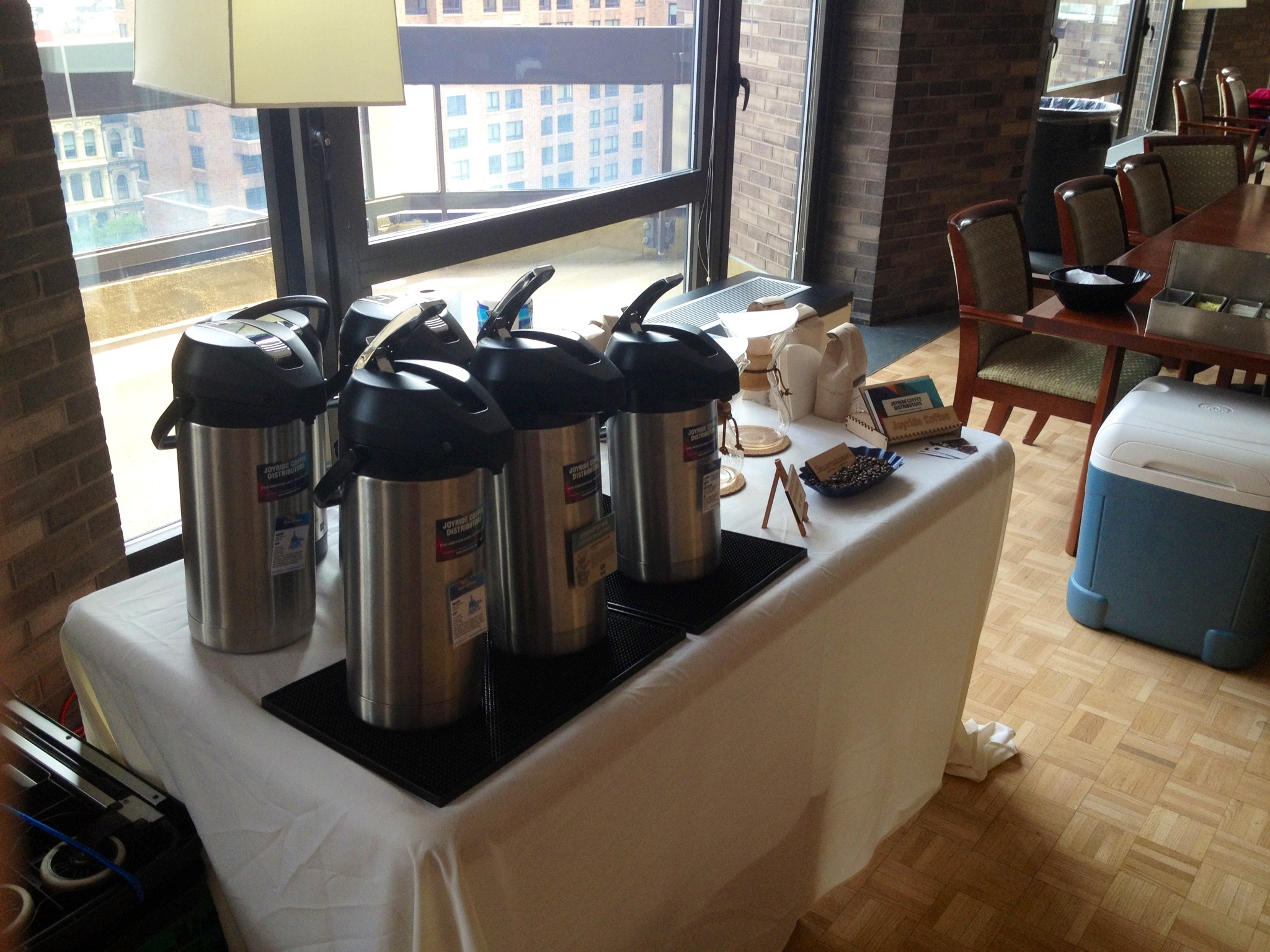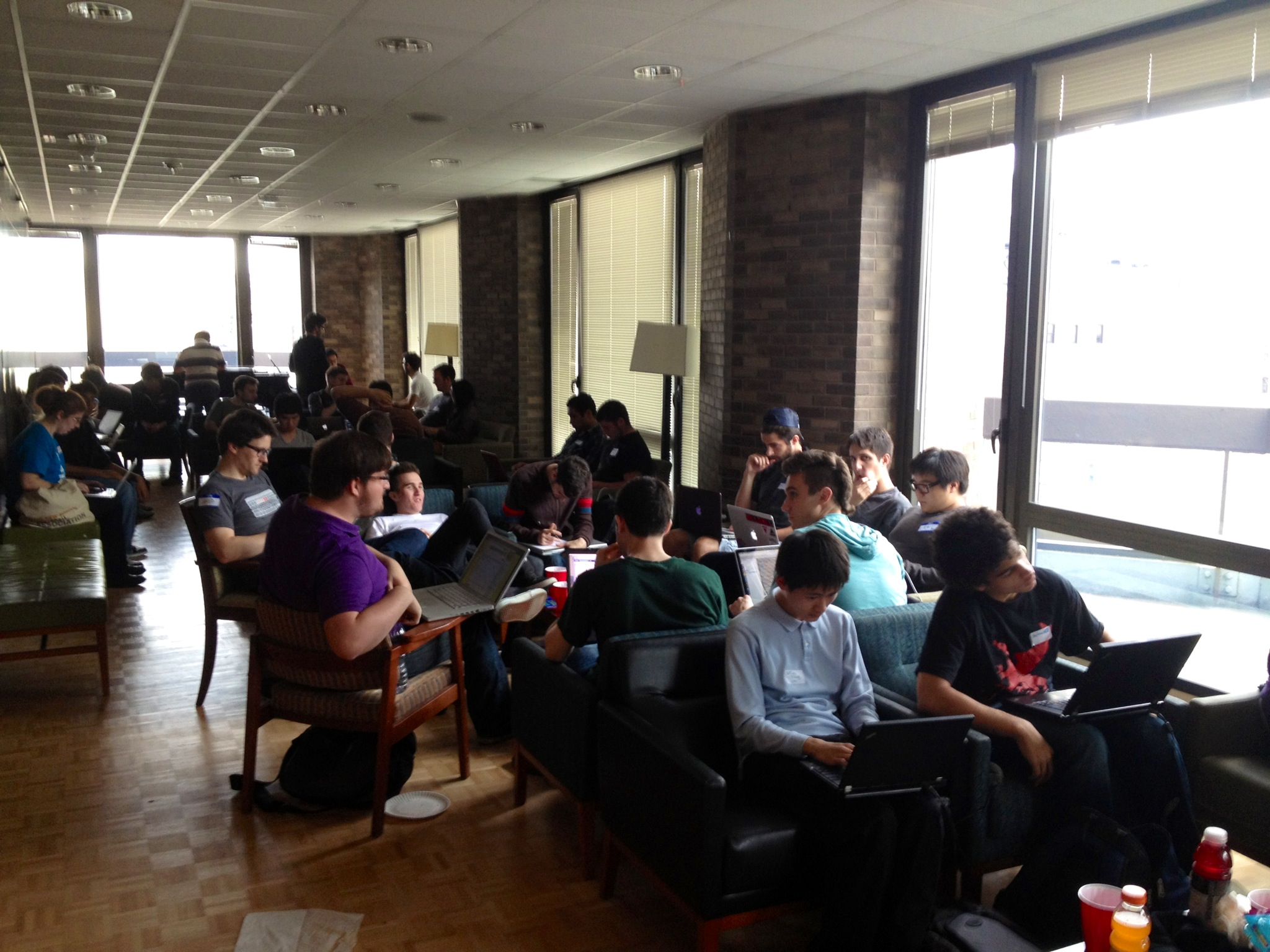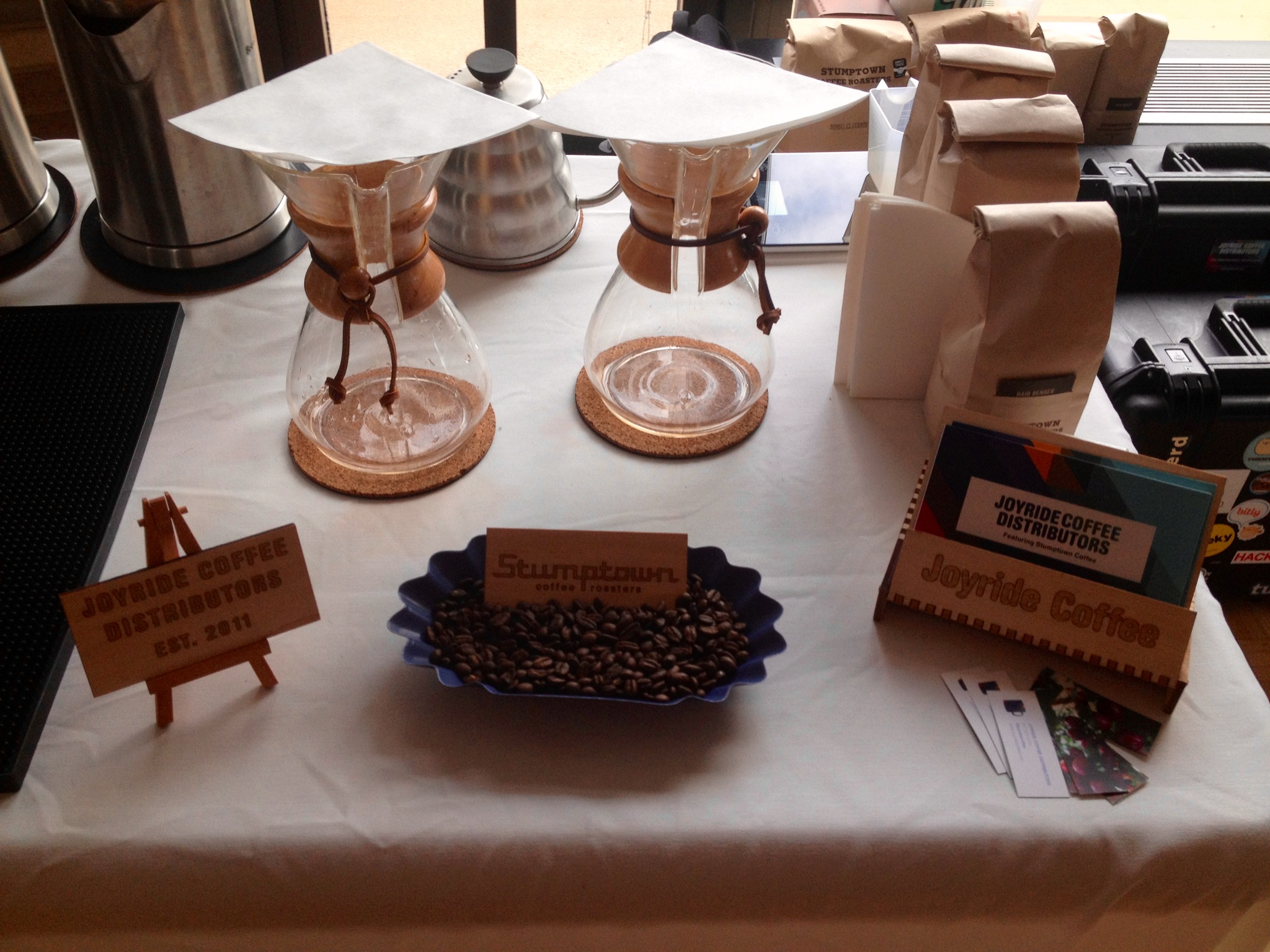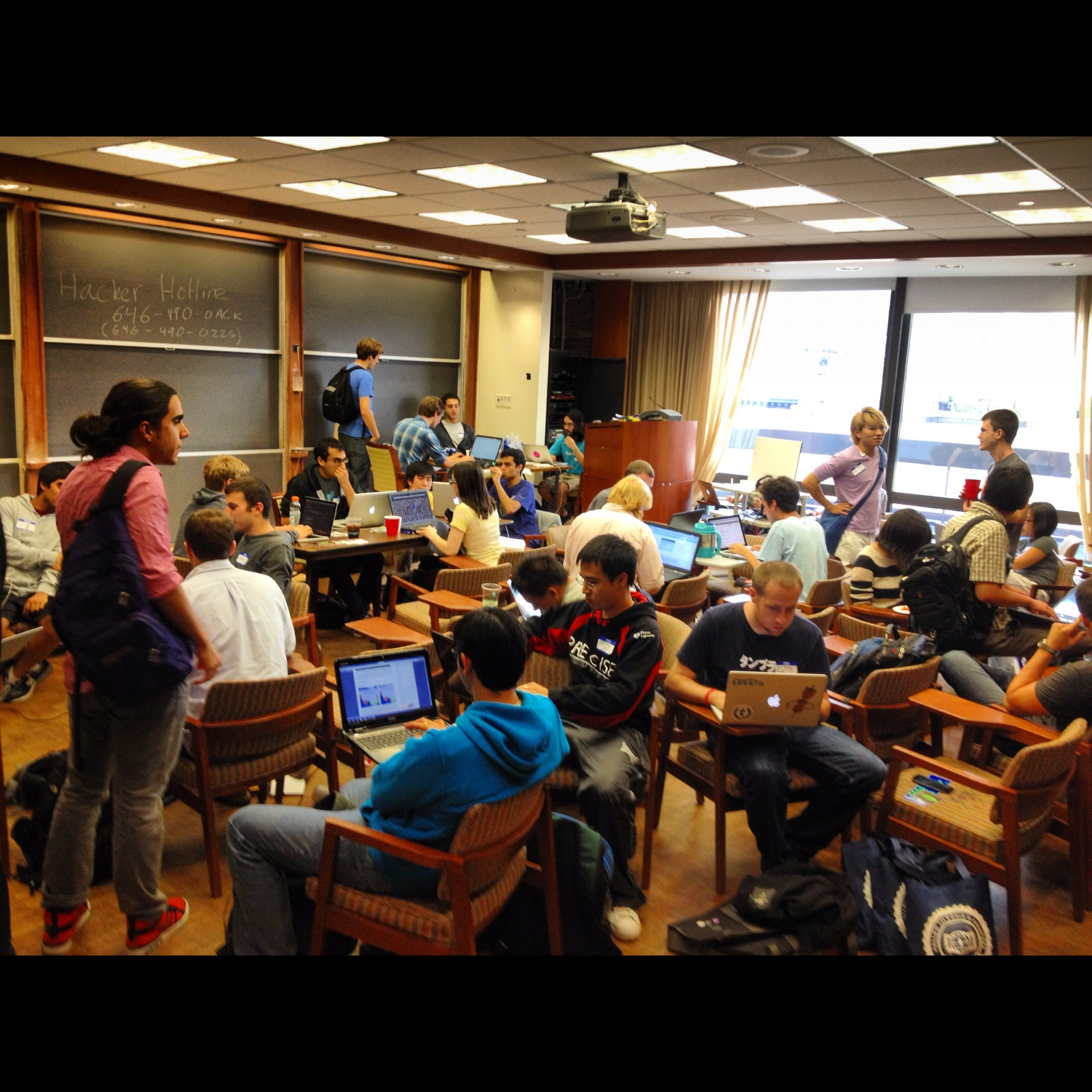Stumptown Coffee is one of the top quality roasters that NYC has to offer. In fact, we at Joyride distribute Stumptown blends to our clients. This roasting company owns their own cafés throughout NYC, and I visited the one in the lobby of the Ace Hotel.
The entrance is embellished with a beautiful font, spelling out the name of the café "Stumptown Coffee." As soon as you walk in, it's like walking into a rainforest. There are very tall plants and wooden decorations everywhere. It's brightly lit with quirky trinkets lining the shelves that add to the Adventureland feel.
I got there around eleven in the morning, which apparently is either one of the peak hours, or it's always that busy, because the line snaked around the counter out the door into the Ace Lobby. But it moved relatively quickly, and people were served their drinks in very simple paper and plastic cups, depending on whether they had ordered cold brew or a hot drink.
I ordered a cold brew, which was the perfect drink for the scorching weather. It wasn't too watery or acidic, and the woodiness of the coffee still came through. If you want a little souvenir or don't want to drink the cold brew immediately, you can ask them for the original bottle, as seen below.
I sat in the lobby which was barely lit, except for a few antique lamps. There were leather couches and loveseats scattered everywhere, with large tables that worked as community seating for anybody with a laptop or work to do. It was very much like an old, musty library.
It's a little too clustered and not quite intimate enough for a meeting with a friend, but I would definitely stop by here either to grab a really good cup of coffee to go, or stay a while to do work.
One thing I have to comment on, though, are the baristas' outfits. Every single one of them was wearing a fedora, and they were all dressed in the most eclectic mix of outfits. This must have been coordinated. Other than that, they were very friendly and accommodating and matched the down-to-earth yet slightly posh vibe of the place – posh only because of the quality of their coffee.
Stumptown Coffee in the Lobby of the Ace Hotel
18 W. 29th St.
Stumptown Coffee
30 W. 8th St.
The Year of Sulawesi: A Renaissance in Indonesian Coffee
Indonesian coffees have long been considered earthy, and frequently flawed. Not anymore thanks to the Toarco Company.
This year, for the first time, I've had an Indonesia that I liked enough to purchase it for personal consumption. Our roasters agree. Blue Bottle, Stumptown and Intelligentsia have all released coffees from the Island Sulawesi, sourced by the Toarco Company of Japan. These coffees are sweet and bright in a way that I have never seen in an Indonesian coffee. For a long time these lots were snatched up by the Japanese market. This year, however, they've made their way to America and I'm damn happy they have. These coffees differ from traditional Indonesians in a number of ways, and well take a look at those differences.
The Toarco Company
This company has been operating on the island since 1976 and has a business model very reminiscent of Third-wave roasters. Indonesia's coffee crops are largely grown by small holders, owning on average only 1,200 trees. Because of this dispersion of control, quality is difficult to monitor and education difficult to disseminate. The Toarco company has created a model plantation, where they educate farmers on proper husbandry, picking, and processing of coffee. Farmers are welcome to come and learn how to properly operate their own farms more professionally, leading to fewer flaws in the resultant cup. To reward better practices, the company uses a strict pay-for-performance model, rewarding the most successful farmers with the highest prices. All the coffees purchased by the Toarco company are cupped three times during their evolution from cherry to green bean and are judged based on quality of cup, size of beans and number of defects. They will purchase coffee only from farmers and collectors who agree to adhere to their uniquely strict sourcing, picking and processing requirements.
The Terroir and Varietals
Coffee was first brought to Indonesia via India by the Dutch East India company in the early 1700s. Coffee was, at that time, a new and popular drink among wealth bourgeoisie and royalty, with prices as high as $300/lb (adjusted for inflation). The plants brought to Indonesia were of the Typica varietal and were from East African stock. These early plants are considered a 'noble' varietal, that is to say, they are damn tasty. Over time, most of these trees were replaced by Robusto and and the arabic hybrid Catimor - both of which have higher yields and are less susceptible to leaf rust (such as the rust that is currently ravaging Colombia). Unfortunately, they are also not as tasty. Due to the rural nature of Sulawesi, those changes never took place and thus, you can still find the original Typica, as well as another great varietal, S-795, all throughout the region. To help maintain these varietals, the Toarco company gives away free seedlings grown on its model estate, Pedamaran. In doing so they are ensuring that these lower yielding, but better tasting varietals continue to thrive in the face of the pressures of globalization and access to alternative, hardier trees.
The Processing
Most Indonesia coffees are processed using the wet-hull method: while the beans are still not fully dried, they are bought to market, where they are purchased, damp, by a middle man. Due to the difficulty of transportation and storage in rural and humid Sulawesi, the typical transportation to well established facilities that we see in Africa and Latin America is damn near impossible for these small-holding farmers. The Toarco company has mitigated this difficulty and in doing so allowed for a better, if more expensive processing system, by setting up rural coffee purchasing stations where the farmers can bring their crops. These are then aggregated and dried fully in their parchment before shipping out. The result is that most of the fruit-like brightness and acidity survives the processing in way that it can't survive wet-hull processing. This difference alone has a drastic impact on the cup, yielding notes that I've never had before in Indonesian coffees.
With an understanding of the background, lets take a look at the specific offerings. They come from slightly different lots but they are all syrupy, fruity and absolutely worth buying if you can get your hands on them.
Intelligentsia Toarco Jaya Sulawsi Region- Tana Toraja Varietal- S-795 Elevation- 1600-1800masl Processing- Wet Processing Cup- Apple and pear with maple syrup make for a round and rich body balanced by toasted almond and dried cherry in the finish. Retail Price- $20/12oz
Stumptown Indonesia Sulawesi Toarco Toraja Region- Toraja, Sulawesi Varietal- S-795, Typica Elevation- 1400-1800masl Processing- Washed Process Cup- Sweet and juicy notes of red currant and plum coat your palate in a cup with the taste and texture of molasses. Retail Price-$16.50/12oz
Blue Bottle Sulawesi Toarco Jaya Region- Tana Toraja, Sulawesi, Indonesia Varietal- S-795/Jember, Typica Processing- Wet-processed Elevation- 1450-1600masl Cup- Huge, sweet body with much more complexity than your typical Indonesian Retail Price- $13.89/12oz
Having tried all three of these coffees, it is immediately apparent that they aren't from the same lot. Those small differences in elevation and origin have lead to three different, yet good cups. The blue bottle is full-bodied and juicy without leaning toward a muddled cup, while, on the other end of the spectrum, the intelligentsia is surprisingly nuanced for such a chewy cup. The Stumptown falls somewhere in the middle, but maintains an attractive sweetness. These coffees bring to mind some of the sweeter Ethiopians I've had, although their body is significantly fuller. This style of coffee is unlike any I've had before. If this is the direction Indonesian coffees production is moving, then I for one welcome the change.
Preferred Brew Method: These coffees make a killer cup that comes out as even fuller and richer when prepared on the french press.
The Good, the Bad and the Aeropress
The Aeropress has been gaining traction in the high-end coffee world since its introduction in 2005, with good reason. But it isn't all good news.
The method brews a quite unique cup, that melds the brightness and mouthfeel of an espresso with the texture and simplicity of a traditional drip. The system definitely has some brilliant elements, but I don't find myself using it, and instead returning to my typical prefered method, the chemex. The traits of the Aeropress make it the ultimate brew method for the road warrior; but for those of us with a more sedentary life style, it leaves an unquantifiable something missing.
The Good:
Light - The Aeropress weights almost nothing. Not important in most situations, but for travel: essential.
Quick - While not quite as fast as espresso, the Aeropress brews very quickly, somewhere in the 30-60 second range, roughly paralleling its hybridity between drip and espresso.
Unbreakable - Not quite. But close. Being made out of plastic certainly helps, but you can carelessly throw this in a bag for travel and arrive with a still functioning brewer, unlike a pour-over, chemex or French press.
Compact - The space required for a aerpress is about that of a 16oz beer can.
Makes Good Coffee - Getting good at brewing on an Aeropress is definetly easier than learning an espresso machine, and it makes a darn fine cup of coffee. They aren't used in cafes because of durability, after all.
Inexpensive - At $30, an Aeropress is an affordable brew method. Because it doesn't break, that $30 can last years, unlike the poor chemexes who keep dying in our offices (boiling water into a 40 degree chemex will break it, who knew?)
Neat - The "puck" system actually makes the Aeropress one of the neatest and cleanest brewing systems I've experienced. There is little mess, and at the end, the brewer just requires a quick rinse.
The Bad:
V1 - Despite working quite well, the Aeropress still feels like a brew method in its infancy. There are too many arguments about inversions for oils v. typical brewing, and the device doesn't quite answer the question of what it is supposed to do. The result is a brewer that hasn't quite worked out all of its kinks just yet. Some would call it versatility, but I am a believer that design should make its use obvious to the user and the Aeropress feesl a bit like it is trying to do everything for everybody.
Filters - Just about the only thing that prevents the Aerporess from being a perfect travel system is the need for specially designed, non-reusable filters. While the need for these is intrinsic to the system itself, their rather small distribution, and the relatively unkown nature of the press, means that you can either order them online, or get them at a specialty store.
SingleCup - The Aeropress, like many popular brewers, makes only a single cup. A big part of coffee for me is the conversation, and the chance to socialize that comes with it. The Aerorpess is and feels like the private possesion of a coffee nerd, it isn't something you could break out at lunch with your grandma, the way a frenchpress or chemex can span the gap between nerd and the creamer-crowd.
NotEspresso - It is a little obnoxious to compare a $30 brewer to a $3000 machine that requires an electrician and a plumber to install. But that is what the aeropress is aiming for. It is a bold effort, and while they capture much of the essence of espresso, the lack of pressure leads to a cup that brings espresso to mind, but which does not fill the same hole in your soul. Sometimes espresso is sublime, and maybe it is my brewing, but I just don't think the Aeropress is up to the challenge. I think I would like it better if it were trying to do its own thing, but espresso, but it's not.
Tough to Learn - While the Aeropress doesn't require the same amount of experience to use properly as say an Espresso machine, the element of pressure requires a steady and skilled hand to use properly. While elements like water weight and grind can be quantified and squared away, manually applied pressure is much more difficult to gauge, and is difficult to deliver consistently from brew to brew.
Obviously, my complaints are nit-picky, and generally speaking the Aeropress is a significant addition to a barista's arsenal. In its own way, as a specialized tool used by a experienced user, it can deliver an amazing cup of coffee. But it isn't for me. I love espresso, and I love drip, but for different reasons. Aeropress fills the gap between the two, but it doesn't really do either quite the way I would like.
Coffee Porter - A Killer Combo
While doing some Thanksgiving shopping at Fairway, I came across this coffee-beer and couldn't resist giving it a try.
It's called "Alta Gracia Coffee Porter" and is brewed by Wolaver's using coffee originating in the Dominican Republic and roasted by Vermont Coffee Company.
While I'm usually a purist in both my beer and coffee tastes, I have to admit this hybrid was quite delightful. The presence of coffee is immediately apparent in the aroma. On the palate, its contribution comes through the chocolatey undertone it imparts to this Vermont porter.
Surprising tasty, Wolaver's Coffee Porter leads me to wonder what other successful coffee-beer combinations could be possible; perhaps an African coffee used to enhance a wheat beer. Imagine a Blue Moon, where the citrus is not from an orange peel, but rather a dry processed Yirgacheffe.
Finally, in gather the links for this post, I learned that Wolaver's is brewed in Middlebury, Vermot, home to my (David) Alma mater, Middlebury College. I'm liking this beer and this brewery even more now. And even more after learning that Middlebury Spanish Professor, Julia Alvarez is the founder of this community supporting coffee farm. According to the Vermont Coffee Company, which has been importing from this farm for nine years, "All the proceeds of the Alta Gracia coffee sales are returned to the community through the fair trade prices we pay, the support we [The Vermont Coffee Company] provide for a community literacy program and teacher, and our donations that fund a sustainable agriculture volunteer."
See below for more info on the brewery and the beer or click here for a page dedicated this Vermont Coffee Company/Wolaver's collaboration, which according to the former's website "is the result of a fantastic collaboration of farmer, roaster, and brewer – all with strong Vermont ties."
Wolaver's Fine Organic Ales: About: 100% Organic Hops and Malts Mission: Our brewery is dedicated to brewing great tasting beers, supporting sustainable agriculture, and minimizing our impact on the environment. Company Overview: Brewers of the nation's first certified organic beers.
Wolaver's Alta Gracia Coffee Porter: Alta Gracia Coffee Porter 5% Wolaver’s Alta Gracia™ Coffee Porter is made in cooperation with the Vermont Coffee Company using 100% certified fair trade, organic coffee from the Alta Gracia farm in the Dominican Republic. Alta Gracia™ Coffee Porter is an exceptionally smooth and flavorfully complex beer that is surprisingly true to the porter style. hint of vanilla brings out the sweetness of the dark-roasted Dominican coffee.


Stumptown Office Coffee Tasting: Fall 2012 at Summer NYC
Today we attended a tasting of the new Stumptown Offerings at Sweatleaf Cafe in Willimasburg. Stumptown has unveiled a new line of offerings. As has been expected for some time, this round was incredibly heavy with Grand Cru. Grand Cru are determined by exceeding a certain score on the Cup of Excellence scoring system. These offerings are balanced, nuanced and largely free of flaws. They are the culmination of the Direct Trade philosophy. Direct trade pays for performance year after year while simultaneously offering the expertise necessary to make those improvements. These farms of the result of years of expertise and experimentation and the yield great beans. The beans are, unfortunately, also quite expensive. The coffees themselves were delicious (even if some have confusing names.)
This tasting was really educational. We taste coffee, but with so many elements affecting taste (Terroir, roast, flaws, washing process, varietal etc, etc, etc) it can be hard to identify how and to what degree a single element effects taste. Today we tasted
1. Different varietals from the same farm
2. A peaberry and normal beans from the same farm, same varietal (Gesha!)
3. Same beans by two different washing process.
4. Different varietals from the same farms.
Only through numerous tasting like this is it really possible to understand the nuances of what go into changing the taste of coffee. Unfortunately, for us, this is only the first step on what is a multi-multi-multi variable calculus of cause and effect in taste.
Stumptown Guatemala Finca El Injerto Gesha Varietal: Tasting and Photos
Yesterday we recieved our Guatemala Finca El Injerto Gesha and we just had a chance to brew it up. Front of the Card:
Location: 15D31'9.59'N x 91D51'13.03"W
Elevation: 1783 Meters
Varietal: Gesha
Flavors: Wild raw honey, concrod grape, orange, cream soda and chocolate pudding interwtie in a cup with a delicate citrus acidity which integrates perfectly with a long, juicy finish
Back of Card:
"After a much anticipated wait, we finally have an opportunity to savor Gesha from Injerto. Our own Duane sorenson brought Gesha seeds to the Aguirre family years ago. Later that year, Arturo Sr. traveled to Hacienda Le Esmeralda and brought some more seeds directly from the Petersons. This exquisite lot not only features the flavors that we associate with Gesha, but also the terroir of Huehuetenango which proveds a sharply focused, exotic profile." -Stumptown Coffee
The coffee tasted balanced and smooth. An amazing cup by any standards, but a little timid for my personal taste. I guess I'm not much of a sucker for a perfectly balanced cup.
The coffee tasted balanced and smooth. It managed to be nuanced, without being muddy while simultaneously holding up a juicy, thick mouthfeel. Weighing in at a hefty $125/12oz (that's more than $10/oz, for you all keeping track) this coffee has a tall order to reach up to. When you think about it in terms of a chemex, however, it only comes to about $19 per chemex, or something like $8 per cup. While that certainly isn't cheap, it costs lest than a mediocre glass of wine at a wine-bar so for some of the best coffee in the world? I'd say it's worth it.
Joyride at HackNY 2012 HACKATHON
As sponsors of HackNY we had the pleasure to brew some beans for some young hackers during the Fall 2012 Hackathon.
This weekend, while many in New York were enjoying the onset of fall, the Joyride team was at the HackNY 2012 Hackathon. The event bring together herds of CS students NY, Boston and Philly (bused in, thanks to HACKNY), to spend 24 hours creating something awesome. We were there for the full day 2pm-2pm, brewing up coffee and trying to stay awake. The event has an amazing vibrancy and it was really cool to see work apear from the either, fulled by high-speed internet and caffeine.
Here are our pictures from the event (you can click on them for better resolution).
And a big thanks to the HACKNY team, for pushing to make NY the coolest place in the world to do the coolest stuff.








